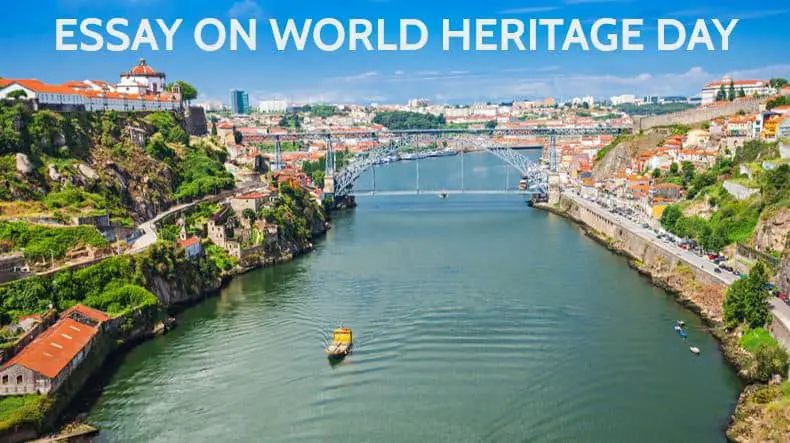

Essay on World Heritage Day for Students and Children in 1000 Words
In this article, you will read an Essay on World Heritage Day for Students and Children in 1000 Words. You will also know its importance and name of different World Heritage Sites in India.
Table of Contents
Our Earth is a strange planet with so many variable things. In various countries of the world, sites of historical-cultural importance should be preserved for future generations. These are kept in the list of heritage. Such natural, historical, religious sites are included in the list of heritage sites by UNESCO.
Every year on April 18, World Heritage Day is celebrated all over the world. The purpose of celebrating this day is to make people aware of the conservation and importance and to attract them by giving information about such sites located in different countries of the world.
This critical day, celebrated on April 18 every year, is an effort to preserve the heritage of the world. Our India is also a land full of historical, religious, natural, and cultures artifacts, memories, and sites. This heritage site has been attracting people from all over the world. Every Indian citizen should be proud of the heritage sites of his country and take steps towards their protection.
World Heritage Day was celebrated for the first time in the world in Tunisia on April 18, 1982. It was organized by the International Council of Monuments and Sites. After this, in the year 1983, it has been decided by UNESCO to celebrate it on April 18 every year.
Importance of World Heritage Day
On April 18, we celebrate World Heritage Day. The purpose of celebrating this day is that all the history, culture, and nature-related sites related to human history should be protected, and awareness among the general public should be created.
An international treaty was proposed by UNESCO of the United Nations, an organization of 193 member countries of the world, committed to the preservation of all the world’s natural and social heritage.
Twenty-one member countries had signed this proposal. The first proposal of this World Heritage Treaty was put in the year 1972, UNESCO included three lists of World Heritage Sites, which are as follows-
- Natural Heritage Site
- Cultural heritage site
- Mixed Heritage Site
World Heritage Day is an annual event on April 18 worldwide. The main objective of celebrating this event was to preserve the heritage of three categories for the next generation and put consistent efforts in front of the world.
As of 2015, 1031 sites around the world have been included in the World Heritage Site by UNESCO. UNESCO gives these sites the World Heritage Fund. All these sites have 802 cultural categories, 197 natural places, and 32 mixed sites. World Heritage Day is celebrated to create awareness about these sites of the world.
World Heritage Sites of India
UNESCO lists such heritage sites in different countries of the world. Italy has the most significant number of World Heritage Sites in the world, numbering 51. Apart from this, 48 in China, 44 in Spain. Forty-one in France, 40 in Germany, 33 in Mexico, 32 such sites in our country India have been included in the World Heritage List.
Agra Fort, Ajanta Caves, Sanchi Stupas, Champaner-Pandavgarh Bagh, Chhatrapati Shivaji Terminal, Old Goa Church, Elephanta Caves, Ellora Caves, Fatehpur Sikri, Chola Temples, Hampi Memorials, Mahabalipuram Monuments, Pattadakkal Memorials, Humayun’s Tomb, Kaziranga, Nandadevi and Valley of Flowers, Keoladeo, Manas Sundarbans National Sanctuary, Taj Mahal, Indian Mountain Rail, Khajuraho, Mahabodhi Temple, Bhimbetka, Sun Temple of Konark, Qutub Minar, etc. sites of India have been included in the World Heritage List.
Any country has its own civilization culture. Which is inherited to the respective country and state? Culture and civilization are the things that differentiate it from another country. Language, living habits, life philosophy, literature, fine arts tradition, etc. make it different from one country to another.
India has got spiritual life philosophy, literature, fine arts, culture, language, etc. India has inherited centuries-old heritage. The heritage of India has its different penetration around the world, which is visited by millions of foreign tourists every year to see and understand it.
In our country, Indian philosophy, spirituality, religious tolerance, unity in diversity , and historical heritage are some such unique heritage on which every Indian is proud.
The proven history of India’s civilization is more than five thousand years. In such an extended period, hundreds of foreign invading castes attacked here and stayed through it. Except for the eternal tradition of India, no other ideology is in existence, even if they are, they are equal.
Ancient Indian Hindu society was tolerant, whose influence can be seen in the entire Indian community today. In India today, some people believe in Hindu, Muslim, Sikh, Christian, Buddhist, Jain, Zoroastrian, and Zoroastrianism. The Constitution of India has also adopted the idea of secularism, keeping the state separate from religion.
Festivals are celebrated in India for 12 months, due to which it is also called the country of festivals. August 15, January 26, Gandhi Jayanti are considered as the three national festivals of India. Apart from these, in big festivals, Holi , Diwali , Eid , Christmas, Lohri , Rakhi , etc. are celebrated by followers of all religions, giving a message of brotherhood.
Many vital sites linked with history are part of India’s heritage. In which Nalanda, Rajgir, Bodh Gaya, and Vaishali are sites associated with Gautam Buddha. Among other places, Kurukshetra, Mathura, Varanasi, Prayag, Haridwar, Sarnath, Ayodhya, Khajuraho, Sanchi, Ajanta Ellora, Puri, etc. are the heritage sites of our heritage in India.
Millions of foreign travelers visit India to visit religious and historical sites of India. The world of Mughal architecture and fine arts has its own distinct identity. These include the Taj Mahal of Agra, the Red Fort of Delhi, Qutub Minar, etc. Many schemes of the government are working at essential sites like Anjata and Ellora caves in Maharashtra, Nalanda in Bihar, and Puri in Odisha.
The revival of India’s holy city of Kashi is a milestone in the direction of saving India’s heritage. Indian classical music has a different place in the world. Other than traditional, other song styles are as follows. Dhrupad, Dhamar, Khyal, Tarana, Thumri, Ghazal, Tappa, Hori, Bhajans, songs, folk songs, etc. are ancient styles of music in India. I hope you like this Essay on World Heritage Day.
Leave a comment Cancel reply

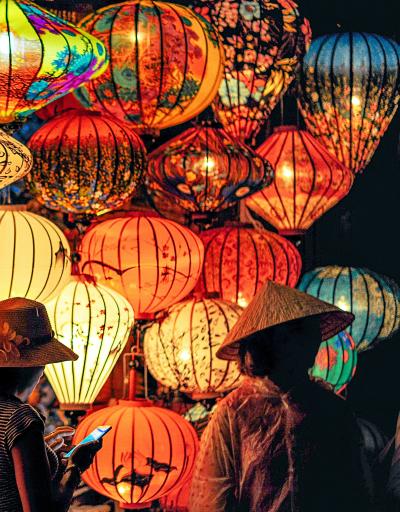
- Armed Conflict and Heritage
- Culture in Emergencies
- Disaster Risk Reduction
- Illicit Trafficking of Cultural Property
- Revive the Spirit of Mosul
- Culture and Sustainable Development
- Culture and Climate change
- Culture and Biodiversity
- Culture and Education
- Culture and Africa
- World Heritage
- Intangible Cultural Heritage
- Underwater Cultural Heritage
- Memory of the World
- Diversity of Cultural Expressions
- Creative Cities
- Culture for Small Island Developing States
- World Book Capital Network
- COVID-19 pandemic
- UNESCO-MONDIACULT 2022 World Conference
- The Tracker Culture & Public Policy
- Culture in the G20
- Inter-Agency Platform
- International Funds for Culture
- Category 2 Centres and Institutes in Culture
- International Day of Nowruz
- World Art Day
- World Book and Copyright Day
- International Jazz Day
- African World Heritage Day
- International Day against Illicit Trafficking in Cultural Property
- International Day of Islamic Art
- World Olive Tree Day
- International Arts Education Week (20-26 May)
- 2023 - 20th Anniversary of the Convention for the Safeguarding of the Intangible Cultural Heritage
- 2021 - International Year of Creative Economy for Sustainable Development
- 2019 - International Year of Indigenous Languages
- 2017 - International Year of Sustainable Tourism
- 2010 - International Year for the Rapprochement of Cultures
- Legal Instruments
- Publications
Cultural heritage: 7 successes of UNESCO’s preservation work
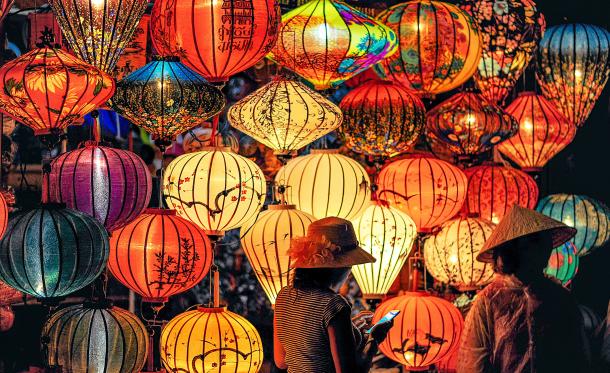
The power of preserving cultural heritage to build a better world
Why do we go to great lengths to preserve culture and make it bloom? Culture is a resource for the identity and cohesion of communities. In today’s interconnected world, it is also one of our most powerful resources to transform societies and renew ideas. It is UNESCO’s role to provide the tools and skills we need to make the most of its ultimate renewable energy.
Historical landmarks, living heritage and natural sites enrich our daily lives in countless ways, whether we experience them directly or through the medium of a connected device. Cultural diversity and creativity are natural drivers of innovation. In many ways, artists, creators and performers help us change our perspective on the world and rethink our environment. These are precious assets to respond to current global challenges, from the climate crisis to the COVID-19 pandemic.
The notion of culture has greatly evolved over the last 75 years. UNESCO’s actions over the past decades bear witness to the many ways in which humanity tried to understand how culture can strengthen the sense of who we are – from the awareness of the necessity to protect heritage from destruction at the end of World War II, to the launch of international campaigns to safeguard World Heritage sites and the concept of living and intangible heritage, a focus on creative economy and the need to sustain cultural jobs and livelihoods. Our relationship with culture has deeply evolved over the last century. If we look into the past, we might be better prepared to tackle further changes ahead.
The United States will be participating in an international effort which has captured the imagination and sympathy of people throughout the world. By thus contributing to the preservation of past civilizations, we will strengthen and enrich our own.
Abu Simbel – We do not have to choose between the living and the dead

A few minutes before sunrise, thousands of visitors line up inside the temple of Abu Simbel, holding their breath. They are about to witness a rare phenomenon that has taken place twice a year for the last 3,000 years. Every February and October at 6:29 am, the light of the rising sun pierces through the narrow entrance. The rays penetrate over 70 metres deep across the giant pillared hall up to the inner sanctuary, illuminating the statue of the man who built the temple during the 13th century BC, Pharaoh Ramses II.
Carved out of a rocky hill, the Temple of the Rising Sun had been conceived to show the might of Egypt’s greatest pharaoh to the Nubian people in the Upper Nile. Over time, the great temple and the smaller buildings became covered in sand and lay forgotten for centuries, until their rediscovery in 1813. The supreme example of ancient Egypt’s knowledge of astronomy and the skill of its architects could be admired again.
But just over a century later, the southernmost relics of this ancient human civilization were threatened with underwater oblivion and destruction by the rising waters of the Nile following the construction of the Aswan High Dam. The construction of the Dam was meant to develop agriculture as well as Egyptian independence and economy, and triggered a global debate that has fuelled media front pages and discussions ever since: should we have to choose between the monuments of the past and a thriving economy for the people living today? Why should people care for ancient stones and buildings when so many people need food and emergency assistance?
In the course of an unprecedented safeguarding campaign to save the temples of Egypt, UNESCO demonstrated that humanity does not have to sacrifice the past to thrive in the present – quite the opposite. Monuments of outstanding universal value help us understand who we are and also represent massive opportunities for development. Two millennia after a Greek author and scientist drew the famous list of the world’s seven wonders, the very notion of World Heritage came to life.
The race against time began in 1964 , when experts from 50 nations started working together under the coordination of UNESCO in one of the greatest challenges of archaeological engineering in history. The entire site was carefully cut into large blocks, dismantled, lifted and reassembled in a new location 65 metres higher and 200 metres back from the river, preserving it for future generations.
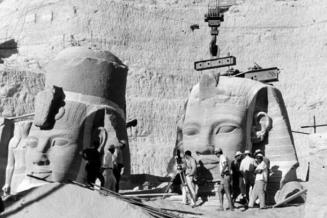
Today, the four majestic statues that guard the entrance to the great temple stare at the river and the rising sun every day. As they did 3,000 years ago. The success of the international cooperation to save Abu Simbel raised awareness about the fact that all over the world there are places of outstanding universal value. Just like the Nile valley temples, they must be protected from many threats such as armed conflict, deliberate destruction, economic pressure, natural disasters and climate change.
The World Heritage Convention was adopted in 1972 as the most important global instrument to establish this notion, bringing all nations together in the pursuit of the preservation of the World’s Natural and Cultural Heritage. With its 194 signatory Member States, it is today one of the world’s most ratified conventions.
How is a site inscribed on the UNESCO World Heritage List?
For a site to be inscribed on the UNESCO World Heritage List, it must first be nominated by the country where it is located. The nomination is examined by international experts who decide whether the inclusion is justified. Finally, the World Heritage Committee, a body of 21 UNESCO elected Member States, takes a vote.
Venice – Can the safeguard of cultural heritage and global tourism coexist?

Launched only a few years after the Nubian temples initiative, the safeguarding campaign for Venice was a response to various challenges including the rising waters and the explosion of global tourism.
Stepping outside the railway station early on an autumnal morning, visitors are met with the view of the chilly air colliding with the water, forming a thick, soft blanket of fog over the Grand Canal, the ‘main street’ of Venice. The church of San Simeone Piccolo, with its oversized dome and slender neoclassical columns, and the neighbouring buildings appear to be floating on the water of the lagoon. It’s a sight that has welcomed millions of visitors from all over the world since the heydays of the Serenissima, when the city ruled as one of Europe’s economic superpowers.
Yet, the breath-taking beauty that inspired countless painters, writers and artists over the centuries remains fragile and at risk of being lost forever. Like the Abu Simbel temples, the city’s survival is threatened by rising water levels. The inexorable increase in sea level has caused flooding to become a regular occurrence. Humidity and microorganisms are eating away the long wooden piles that early dwellers drove deep into the muddy ground of the lagoon to build the first foundations of Venice, 1,600 years ago.

After 1966, the year of the worst flooding in Venice’s history, UNESCO and the Italian Government launched a major campaign to save the city. An ambitious project involving giant mobile flood gates was undertaken to temporarily isolate the lagoon from the high tides and protect the lowest areas from flooding. Thirty years later there is unanimous agreement on the successful results both of the technical achievements and international cooperation.
But Venice still needs attentive care, and its continued survival calls for unflagging vigilance. The city remains threatened on several fronts – mass tourism, the potential damage of subsequent urban development and the steady stream of giant cruise ships crushing its brittle foundations.
International mobilization and pressure around the status of Venice led to the Italian Government’s decision in 2021 to ban large ships from the city centre, as a necessary step to protect the environmental, landscape, artistic and cultural integrity of Venice. This decision came a few days after UNESCO announced its intention to inscribe the city on its World Heritage in Danger list. Until a permanent big cruise docking place is identified and developed, liners will be permitted to pull up in Marghera, an industrial suburb of Venice. Such decisions illustrate the great complexity of protecting historic cities and cultural heritage urban centres, which in this particular situation called for tailor-made measures and techniques different from those implemented for the safeguarding of the fabled Egyptian temples.
If every museum in the New World were emptied, if every famous building in the Old World were destroyed and only Venice saved, there would be enough there to fill a full lifetime with delight. Venice, with all its complexity and variety, is in itself the greatest surviving work of art in the world.

Angkor – A successful example of longstanding international cooperation
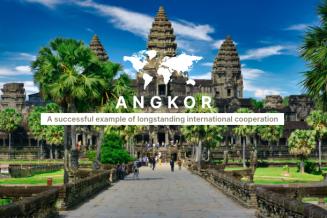
Deep in the forests of Cambodia, in the Siem Reap Province, the five lotus-flower-shaped towers of majestic Angkor Wat soar towards the sky. When approaching from the main gate, the vast scale of the temple and the precise symmetry of the buildings are awe inspiring. This is the world's largest religious monument.
Angkor Wat was part of a sprawling city as big as London, the heart of an empire that between the 9th and 15th centuries extended from southern Vietnam to Laos, and from the Mekong River to Eastern Myanmar. By around 1500 A.D., the Khmer capital was abandoned, most likely after heavy floods and lengthy droughts. Its temples, buildings and complex irrigation network were swallowed by the surrounding forests and lay hidden until their rediscovery in 1860.
By the early 1990s, the site was under major threat, with many of the temples at high risk of collapse and several sites looted. Conservation work at Angkor had not been possible since the outbreak of the civil war, the rise of the Khmer Rouge regime and the following civil unrest.
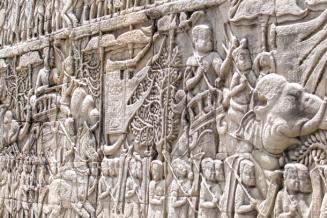
Angkor Wat’s inclusion in UNESCO’s World Heritage List in 1992 marked a milestone in the country’s recovery after years of conflict. The UNESCO-backed preservation of the temples aimed to assist in nation-building and national reconciliation. The action of the International Coordinating Committee (link is external) (ICC-Angkor) for the safeguarding and development of this exceptional cultural site is a striking example of international solidarity and testifies to one of UNESCO's most impressive achievements for heritage. Thirty countries and an ad hoc experts group for scientific, restoration and conservation projects were brought together under an innovative approach, closely linking safeguarding operations to sustainable development efforts.
In 25 years, Angkor has thus become a living laboratory demonstrating the potential of sustainable tourism and crafts, with the mobilization of local communities for social cohesion in 112 villages. The gigantic site now supports 700,000 inhabitants and attracts some five million visitors whose flow must be managed each year. The park authorities are carrying out several projects aimed at improving the lives of communities through the implementation of sustainable tourism that respects local sensitivities. The removal from UNESCO’s List of World Heritage in Danger just fourteen years later is a credit to the Cambodian people.
The fact that a project of such magnitude was successfully carried out in a country emerging from more than two decades of conflict in 1992 is a testament to the potential of the World Heritage Convention and the international solidarity led by UNESCO.
Walking through the temple, I saw reminders of the prosperous civilization that built it: hundreds of beautiful figures carved into the walls telling the stories of these ancient people; wide galleries they must have prayed in; long hallways lined with pillars they must have walked down.
No one knows for sure what caused the empire to abandon this temple and the surrounding city, but in the 15th century almost everyone left. Trees grew over the stones. Only Buddhist monks stayed behind to care for — and pray in — the hidden temples.
But that didn’t stop pilgrims and visitors from continuing to journey here to take in these incredible structures. And now, centuries later, I couldn’t be more thankful to count myself as one of these visitors
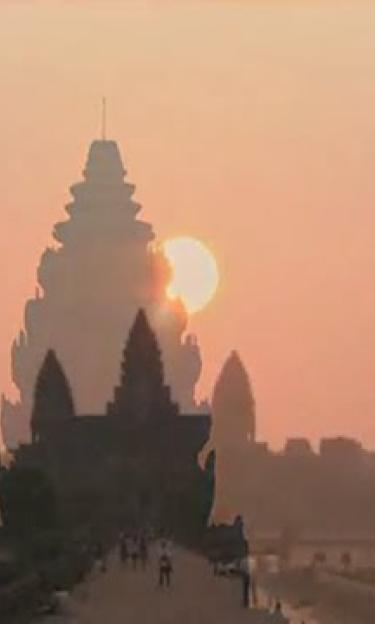
Mostar – Symbols do matter, in war and peace
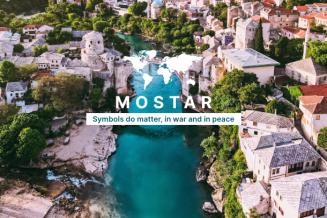
It’s the end of July in Bosnia-Herzegovina. Peak summer means an influx of tourists to the cobbled alleys of Mostar. The cosy medieval town has a long, rich history marked by the peaceful coexistence of three communities: Muslim Bosniaks, Orthodox Serbs and Catholic Croats. Once they arrive in town, visitors from all over the world make a beeline for Mostar’s most emblematic monument, the Old Bridge.
A masterpiece of Ottoman architecture, Stari Most – as it’s known locally – is a symbol of the different communities that have existed side-by-side in the area. Since the 16th century, the bridge had brought them together across the Neretva river – until the Bosnian war. The bridge was a symbol of unity between the Bosnian community (Muslim), in the east of the city, and the Croats and Serbs to the west. The bridge of Mostar (of Ottoman, therefore Muslim origin) served as a link between all these communities – as a pedestrian bridge, it had no military or strategic value. Its destruction in 1993 was only meant to force the communities to separate, to deny their mixing with their neighbours. The bridge was in ruins and, with it, the values of peace and understanding this centuries-old structure had embodied.
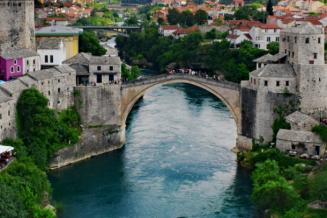
Five years later, UNESCO coordinated a reconstruction project to rebuild the Old Bridge. Despite the scars of the war that are still visible today on the city walls, the reconstructed bridge has now become a symbol of reconciliation and post-conflict healing.
Today, the crowds jam the street to watch the traditional diving contest from the top of the bridge, a long-held custom resumed once Stari Most was restored to its former glory. Every July, young people of Mostar’s three communities compete with courage by jumping into the river 29 metres below, just like they did before the war.
For over four years after the ceasefire, former enemies worked together to retrieve the stones from the riverbed and rebuild their former symbol of friendship. Reconstructed in 2004 and inscribed on UNESCO’s World Heritage list in 2006, Stari Most today is a bridge between a common past and a common future. It is certainly not enough to rebuild a bridge to restore confidence and rebuild peace in a war-torn society. But it certainly matters to care for the symbols of peace.
I was in my office, working to the sound of mortar fire, when we heard the cries in the street – cries that the bridge had fallen. And what happened then was so impressive that I will never forget it. Everyone came out to see. Grenades and bombs were falling everywhere, but still they came out of their hiding places: young and old, weak and strong, Muslim and Christian, they all came, all crying. Because that bridge was part of our identity. It represented us all.
Timbuktu – When warlords target heritage, peacemakers respond with more heritage

Sitting at the gateway to the Sahara Desert, Timbuktu conjures images of a mythical city at the end of the world, where Arab and African merchants would travel from afar to trade salt, gold, cattle and grain. In the English language, the city in northern Mali has come to represent a place far away. Undaunted, caravans still ply the cross-desert route and come to the city several times a year. They carry rock salt extracted from the northern Sahara, just like their ancestors did for centuries.
In its heyday, during the 16th century, the city had 100,000 inhabitants, as its mosques and holy sites played an essential role in the spread of Islam in Africa. The city became an important centre of learning in Africa and its libraries the repository of at least 700,000 historical manuscripts on art, science and medicine, as well as copies of the Qur’an. These manuscripts, written in ornate calligraphy, bear witness to the richness of African history and intellectual life.
During the conflict of 2012–2013, more than 4,000 of the 40,000 manuscripts kept at the Ahmed Baba Institute were lost. Some were burnt or stolen, while more than 10,000 remained in a critical condition. The inhabitants of Timbuktu helped save their precious heritage by secretly spiriting away more than 300,000 manuscripts to the capital, Bamako. Other texts were sheltered between mud walls or buried. Although protected from immediate destruction, the manuscripts are now preserved in conditions that may not safeguard them for future generations.
To help preserve Timbuktu’s cultural heritage and encourage reconciliation, UNESCO has been supporting the local communities to take part in ancient manuscript conservation projects and ensure their lasting preservation for humanity.
UNESCO has coordinated the work to rebuild the fourteen mausoleums inscribed on the World Heritage List, as well as the Djingareyber and Sidi Yaha mosques, that were deliberately destroyed by armed groups during the conflict.
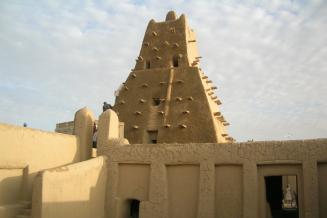
The reconstruction of Timbuktu’s devastated cultural heritage aimed to foster reconciliation among communities and restore trust and social cohesion. An important aspect of the project was the drive to include the reconstruction of the mausoleums in an overall strategy aimed at revitalizing building traditions and ensuring their continuity, through on-the-job training activities and conservation projects.
To ensure the rebuilt shrines matched the old ones as closely as possible, the reconstruction work was checked against old photos and local elders were consulted. Local workers used traditional methods and local materials, including alhor stone, rice stalks and banco – a mixture of clay and straw.
The destruction of the mausoleums of Timbuktu has been a shock, and a clear turning point revealing the importance taken of culture and heritage in modern conflicts fuelled by violent extremism and fundamentalist ideologies. It has shown how strongly fundamentalists are willing to destroy other Islamic cultures, and any other vision which differs from their own. Similar direct destruction of Islamic, pre-Islamic, Christian or Jewish heritage, has then been seen in Iraq and Syria. The need to restore heritage has become far more than a mere cultural issue – it has become a security issue, and a key component for the resilience and further cohesion of societies torn by conflicts.
At present, the monuments in Timbuktu are living heritage, closely associated with religious rituals and community gatherings. Their shape and form have always evolved over time both with annual cycles (that of the rain and the erosion of the plastering); that of regular maintenance (every three to five years); repairs of structural pathologies, often adding buttresses; and at times more important works, including extensions and raising of the roof structure. How to take that into account while trying to guide and assist the local people in their self-capacity, their resilience in keeping their heritage as they have done for over 600 years? What should be done and to what extent? Who should be responsible for what? These are tricky questions of heritage preservation, far beyond the mere inscription of a site on the famous World Heritage list.
Salt comes from north, gold from south and silver from the land of Whites, but the Word of God, the famous things, histories and fairy tales, we only find them in Timbuktu.
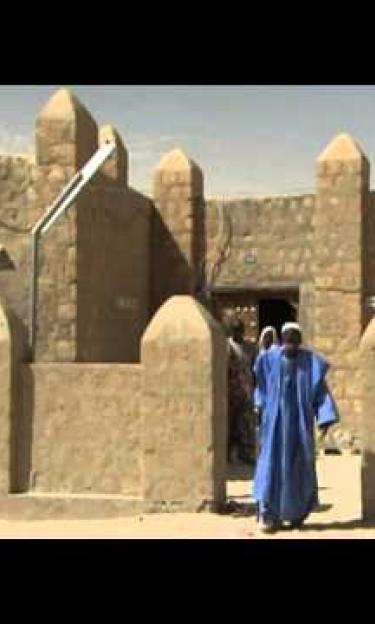
Preserving cultural identity and Korean traditions: The bond of living heritage

It’s the end of November in the countryside near Jeonju, the capital of the North Jeolla Province. The weather is getting chilly and winter is just a couple of weeks away.
It’s time to prepare for the long, icy-cold season. It’s time to make kimchi.
The Republic of Korea’s staple food is a side dish of salted and fermented vegetables that makes its appearance at every meal. It’s not just the country’s emblematic dish: its preparation ( kimjang ) is a community event.
Housewives monitor weather forecasts to determine the most favourable date and temperature for preparing kimchi. Entire families, friends and neighbours gather together to make it. The process is rather laborious and requires many hands to process the large quantities of vegetables required to last throughout the winter months. They all work together, exchange tips and tighten their relationships through kimjang. Families take turns making kimchi to form closer bonds.
Today, the entire village will get together in one of the houses for the occasion. Together, they will wash the napa cabbage that was pickled in salt the night before and mix in the seasonings that will give kimchi its unique sour-and-spicy flavour. The specific methods and ingredients are transmitted from mother to daughter so that kimjang culture is preserved through the generations.
Since 2013, kimjang has been included in UNESCO’s Representative List of the Intangible Cultural Heritage of Humanity as an important part of Korean culture, embodying the country’s cooperative and sharing team spirit. Kimjang is a vital cultural asset of a community and worth preserving and celebrating for the rest of humanity. Even though there may be regional differences in the preparation of kimchi, it transcends class, regional and even national borders.
Cultural practices often precede the instauration of national borders and the start of conflict among its citizens. Shared cultural practices may even be a path to reconciliation.

Such hopes materialized in 2018, when the Democratic People’s Republic of Korea and the Republic of Korea decided to work together to submit a joint submission for traditional wrestling as an element of UNESCO’s Representative List of the Intangible Cultural Heritage of Humanity.
Ssirum/Ssireum (wrestling) is a physical game and a popular form of entertainment widely enjoyed all across the Korean peninsula. In the North, two opponents try to push each other to the ground using a satpa (a fabric strap connecting the waist and leg), their torso, hands and legs. Ssirum/Ssireum is distinguished by the use of the satpa and the awarding of a bull to the winner. In the South, Ssirum/Ssireum is a type of wrestling in which two players wearing long fabric belts around their waists and one thigh grip their opponents’ belt and deploy various techniques to send them to the ground. The winner of the final game for adults is awarded an ox, symbolizing agricultural abundance, and the title of ‘Jangsa’.
As an approachable sport involving little risk of injury, Ssirum/Ssireum also offers a means to improve mental and physical health. Koreans are widely exposed to Ssirum/Ssireum traditions within their families and local communities: children learn the wrestling skills from family members; local communities hold annual open wrestling tournaments; its instruction is also provided in schools.

Following UNESCO’s mediation, the two States Parties agreed for their respective nomination files to be jointly examined by the Intergovernmental Committee for the Safeguarding of Intangible Cultural Heritage in November 2018. UNESCO welcomed this initiative of regional cooperation and, through a historic decision, inscribed "Traditional Korean wrestling (Ssirum/Ssireum)" on the Representative List of the Intangible Cultural Heritage of Humanity, as a joint inscription from the Democratic People’s Republic of Korea and the Republic of Korea. While the Lists of the Convention include several examples of multinational nominations prepared by several States (from couscous to the art of falconry and the Mediterranean diet), the coming together of the two States Parties for the joint inscription of Korean traditional wrestling by the Committee is unprecedented. It marks a highly symbolic step on the road to inter-Korean reconciliation. It is also a victory for the longstanding and profound ties between both sides of the inter-Korean border, and for the role cultural diplomacy may have in international relations.
It was the time when the women would gather and gossip. There would be matchmaking. There would be some marriages that came about during the time of kimchi making.
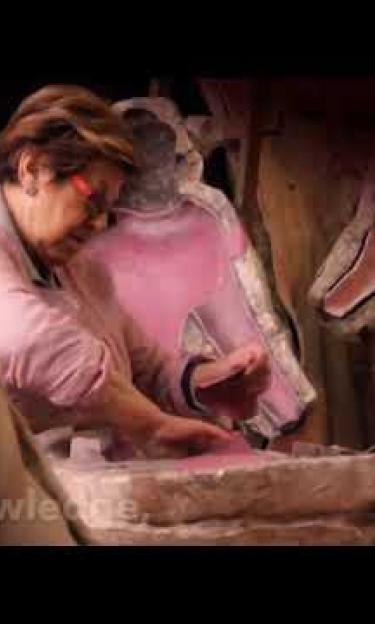
Promoting culture in a post-COVID-19 world
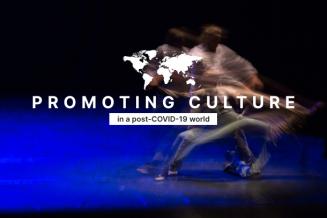
The cultural and creative industries are among the fastest growing sectors in the world. With an estimated global worth of US$ 4.3 trillion per year, the culture sector now accounts for 6.1 per cent of the global economy. They generate annual revenues of US$ 2,250 billion and nearly 30 million jobs worldwide, employing more people aged 15 to 29 than any other sector. The cultural and creative industries have become essential for inclusive economic growth, reducing inequalities and achieving the goals set out in the 2030 Sustainable Development Agenda.
The adoption of the 2005 Convention for the Protection and Promotion of the Diversity of Cultural Expressions was a milestone in international cultural policy. Through this historic agreement, the global community formally recognized the dual nature, both cultural and economic, of contemporary cultural expressions produced by artists and cultural professionals. Shaping the design and implementation of policies and measures that support the creation, production, distribution of and access to cultural goods and services, the 2005 Convention is at the heart of the creative economy.
Recognizing the sovereign right of States Parties to maintain, adopt and implement policies to protect and promote the diversity of cultural expression, both nationally and internationally, the 2005 Convention supports governments and civil society in finding policy solutions for emerging challenges.
Based on human rights and fundamental freedoms, the 2005 Convention ultimately provides a new framework for informed, transparent and participatory systems of governance for culture.

A constant rethinking of culture and heritage
The history of UNESCO bears witness to the deep transformation of the concept of culture over the past decades. From global Conventions mostly dealing with building and stones in the 60’s and 70’s, the international cooperation opened new fronts for the protection and promotion of culture, including intangible cultural heritage, cultural diversity and creative economy. The definition of "culture" was spearheaded by the committee led by former UN Secretary-General Javier Pérez de Cuellar and the Mondiacult Conference in 1982. In 2022, the global Mondiacult conference is expected to take stock of progress made in the past 40 years in cultural policies, and re-imagine its future in a post-COVID-19 world.
Have a look at these World Heritage sites
The 30,000-kilometre-long road system was built by the Inca Empire across mountains, valleys, rainforests and deserts to link the Inca capital, Cuzco, with distant areas of the empire, from the Amazon to the Andes. Thanks to its sheer scale, Qhapaq Ñan is a unique achievement of engineering skills, highlighting the Incas' mastery of construction technology.
The granting of World Heritage status in 2019 has made its trail – which every year sees thousands of visitors on their way to the area’s archaeological sites such as Machu Picchu in Peru – eligible for much-needed restoration funds.
Borobudur Temple Compound
Borobudur is the largest Buddhist temple in the world and one of the great archaeological sites of Southeast Asia. This imposing Buddhist temple, dating from the 8th and 9th centuries, is located in central Java. It was built in three tiers: a pyramidal base with five concentric square terraces, the trunk of a cone with three circular platforms and, at the top, a monumental stupa. The walls and balustrades are decorated with fine low reliefs, covering a total surface area of 2,500 m 2 . Around the circular platforms are 72 openwork stupas, each containing a statue of the Buddha. The monument was restored with UNESCO's help in the 1970s.
Bamiyan Valley, Afghanistan
This cultural landscape was simultaneously inscribed on the World Heritage List and the List of World Heritage in Danger in 2003. The property is in a fragile state of conservation, having suffered from abandonment, military action and dynamite explosions. Parts of the site are inaccessible due to the presence of anti-personnel mines.
Related items
- Lists and designations
- Intangible cultural heritage
- Intangible heritage
- Diversity of Cultural Expressions-2005 Convention
- Intangible Cultural Heritage-2003 Convention
- Underwater Cultural Heritage-2001 Convention
- World Heritage 1972 Convention
- Fight Illicit Trafficking-1970 Convention
- Armed Conflict and Heritage-1954 Convention
- Culture & Sustainable Development
- UNESCO Creative Cities Network
- Social Justice
- Environment
- Health & Happiness
- Get YES! Emails
- Teacher Resources

- Give A Gift Subscription
- Teaching Sustainability
- Teaching Social Justice
- Teaching Respect & Empathy
- Student Writing Lessons
- Visual Learning Lessons
- Tough Topics Discussion Guides
- About the YES! for Teachers Program
- Student Writing Contest
Follow YES! For Teachers
Nine brilliant student essays on honoring your roots.
Read winning essays from our fall 2019 student writing contest.

For the fall 2019 student writing contest, we invited students to read the YES! article “ Native and European—How Do I Honor All Parts of Myself? ” by Kayla DeVault. Like the author, students reflected on their heritage and how connected they felt to different parts of their identities. Students then wrote about their heritage, family stories, how they honor their identities, and more.
The Winners
From the hundreds of essays written, these nine were chosen as winners. Be sure to read the author’s response to the essay winners, literary gems and clever titles that caught our eye, and even more essays on identity in our Gallery of Voices.
Middle School Winner: Susanna Audi
High School Winner: Keon Tindle
High School Winner: Cherry Guo
University Winner: Madison Greene
Powerful Voice: Mariela Alschuler
Powerful Voice: Reese Martin
Powerful Voice: Mia De Haan
Powerful Voice: Laura Delgado
Powerful Voice: Rowan Burba
From the Author, Kayla DeVault: Response to All Student Writers and Essay Winners
Gallery of voices: more essays on identity, literary gems, titles we loved, middle school winner.
Susanna Audi
Ethical Culture Fieldston School, Bronx, N.Y.

BRAZIL: MY HEART’S HOME
Saudades. No word in the English language sums up the meaning of this Portuguese term: a deep feeling of longing that makes your heart ache and pound like a drum inside your chest. I feel saudades for Brazil, its unique culture, and my Brazilian family. When I’m in my second home, Bahia, Brazil, I’m a butterfly emerging from its cocoon—colorful, radiant, and ready to explore the world. I see coconut trees waving at the turquoise waves that are clear as glass. I smell the familiar scent of burning incense. I hear the rhythm of samba on hand-beaten drums, and I feel my grandma’s delicate fingers rub my back as I savor the mouth-watering taste of freshly made doce de leite . Although I’m here for only two precious weeks a year, I feel a magnetic connection to my father’s homeland, my heart’s home.
My grandfather or vovô , Evandro, was born in Brazil to a family who had immigrated from Lebanon and was struggling to make ends meet. His parents couldn’t afford to send him to college, so he remained at home and sold encyclopedias door-to-door. My vovô eventually started a small motorcycle parts company that grew so much that he was able to send my father to the U.S. at age sixteen. My father worked hard in school, overcoming language barriers and homesickness. Even though he has lived in America for most of his life, he has always cherished his Brazilian roots.
I’ve been raised with my father’s native language, foods, and customs. At home, I bake Brazilian snacks, such as the traditional cheese bread, pão de queijo , which is crunchy on the outside but soft and chewy on the inside. My family indulges in the same sweet treats that my father would sneak from the cupboard as a child. Two relaxing customs we share are listening to Brazilian music while we eat breakfast on weekends and having conversations in Portuguese during meals. These parts of my upbringing bring diversity and flavor to my identity.
Living in the U.S. makes me feel isolated from my Brazilian family and even more distant from Brazilian culture. It’s hard to maintain both American and Brazilian lifestyles since they are so different. In Brazil, there are no strangers; we treat everybody like family, regardless if that person works at the local shoe store or the diner. We embrace each other with loving hugs and exchange kisses on the cheeks whenever we meet. In the U.S., people prefer to shake hands. Another difference is that I never come out of Starbucks in New York with a new friend. How could I when most people sit with their eyes glued to their laptop screens? Life seems so rushed. To me, Brazilians are all about friendships, family, and enjoying life. They are much more relaxed, compared to the stressed and materialistic average American.
As Kayla DeVault says in her YES! article “Native and European—How Do I Honor All Parts of Myself,” “It doesn’t matter how many pieces make up my whole: rather, it’s my relationship with those pieces that matters—and that I must maintain.” I often ask myself if I can be both American and Brazilian. Do I have to choose one culture over the other? I realize that I shouldn’t think of them as two different cultures; instead, I should think of them as two important, coexisting parts of my identity. Indeed, I feel very lucky for the full and flavorful life I have as a Brazilian American.
Susanna Audi is an eighth-grader who lives in the suburbs of New York. Susanna loves painting with watercolors, cooking Brazilian snacks, and playing the cello. On weekends, she enjoys babysitting and plays several sports including lacrosse, soccer, and basketball. Susanna would love to start her own creative design business someday.
High School Winner
Keon Tindle
Kirkwood High School, Kirkwood, Mo.
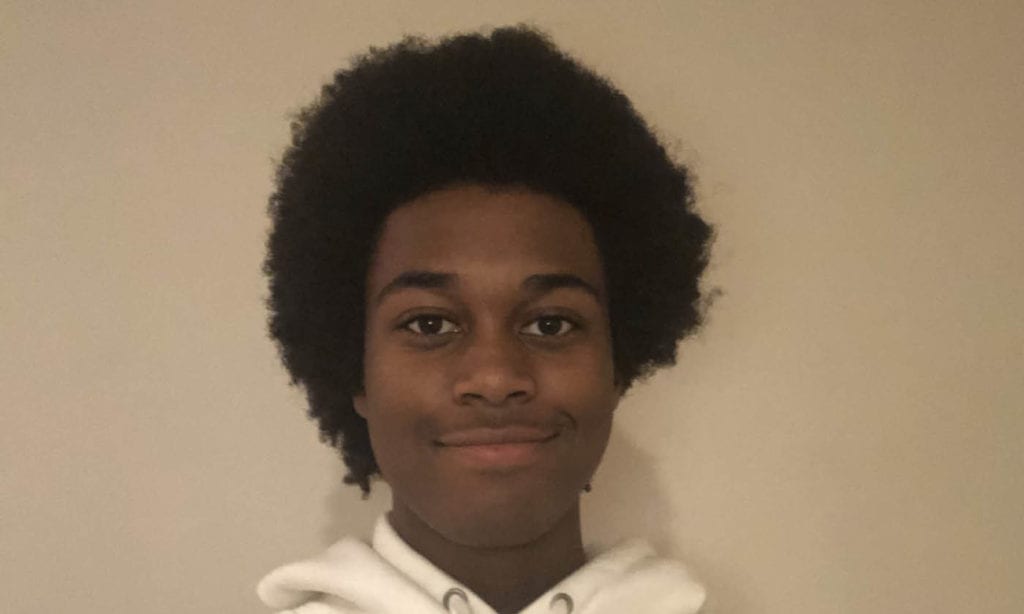
Walking Through the Forest of Culture
What are my roots? To most people, my roots only go as far as the eye can see. In a world where categorization and prejudice run rampant, the constant reminder is that I am Black. My past is a living juxtaposition: my father’s father is a descendant of the enslaved and oppressed and his wife’s forefathers held the whips and tightened the chains. Luckily for me, racial hatred turned to love. A passion that burned brighter than any cross, a love purer than any poison. This is the past I know so well. From the slave ship to the heart of Saint Louis, my roots aren’t very long, but they are deeply entrenched in Amerikkkan history.
This country was made off of the backs of my brothers and sisters, many of whom have gone unrecognized in the grand scheme of things. From a young age, White children are told stories of heroes—explorers, politicians, freedom fighters, and settlers whose sweat and determination tamed the animalistic lands of America. They’re given hope and power through their past because when they look in the mirror they see these heroes. But what about me? My stories are conveniently left out of the textbooks; I have never been the son of a king or a powerful African leader, just expensive cargo to be bought and sold to the highest bidder. It seems we, as a people, never truly left the ship.
Even now, we’re chained to the whitewashed image of Black history. I can never truly experience the Black tradition because there are multiple perspectives. The truth is clouded and lost due to the lack of documentation and pervasive amount of fabrication. How am I supposed to connect to my heritage? America tells me to celebrate the strength of my ancestors, the strength of the slaves, to praise something they helped create. The Afrocentrics tell me to become one with the motherland, celebrate the culture I was pulled away from. However, native Africans make it clear I’ll never truly belong.
Even the honorable Elijah Muhammad tells me to keep my chin pointed to the clouds, to distrust the creation of Yakub, and to take my place among the rest of Allah’s children. Most people don’t have the luxury of “identifying with all of the pieces of [themselves],” as Kayla DeVault says in the YES! article “Native and European—How Do I Honor All Parts of Myself?”
They’re forced to do research and to formulate their own ideas of who they are rather than follow the traditions of an elder. For some, their past works as a guide. A walk through life that has been refined over generations. Others, however, are forced to struggle through the dark maze of life. Hands dragging across the walls in an attempt to not lose their way. As a result, their minds create stories and artwork from every cut and scratch of the barriers’ surface. Gaining direction from the irrelevant, finding patterns in the illogical.
So what are my roots? My roots are my branches, not where I come from but where this life will take me. The only constant is my outstretched arms pointed towards the light. A life based on the hope that my branches will sprout leaves that will fall and litter the path for the next generation.
Keon Tindle is unapologetically Black and embraces his African American background. Keon is an esports competitor, musician, and producer, and especially enjoys the craft of pairing history with hip-hop music. He is always ecstatic to dabble in new creative outlets and hopes to pursue a career in neuroscience research.
Thomas Jefferson High School for Science and Technology, Alexandria, Va.
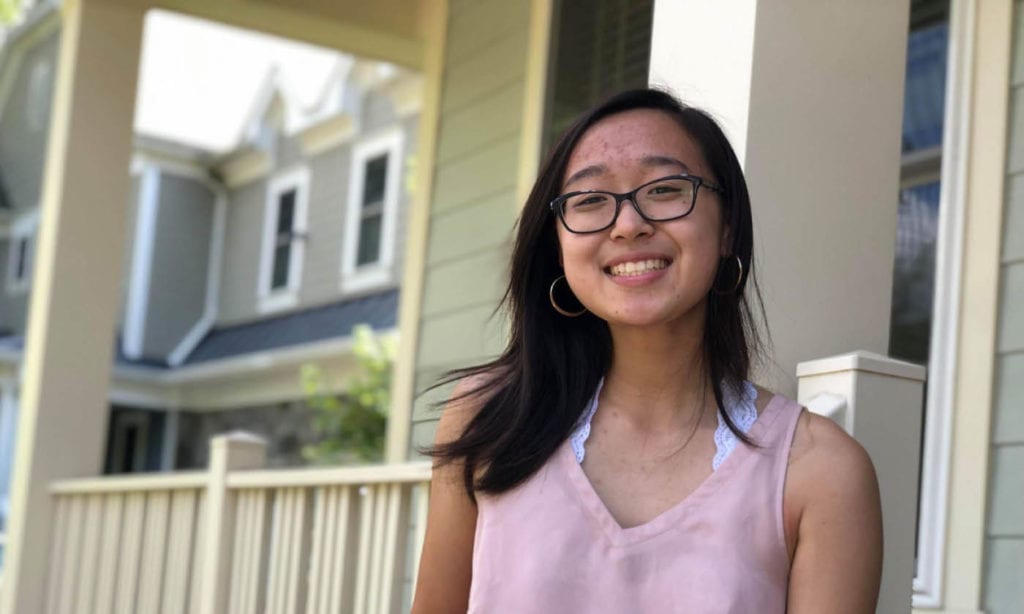
Tying the Knot
The kitchen smells like onions and raw meat, neither unpleasant nor pleasant. Nainai’s house slippers slap against our kitchen floor as she bustles around, preparing fillings for zongzi: red bean paste, cooked peanuts, and marinated pork. I clap my pudgy hands together, delighted by the festivities.
Nainai methodically folds the bamboo leaves into cones, fills them up with rice, and binds the zongzi together with string that she breaks between her teeth. I try to follow suit, but when I try to tie the zongzi together, half the rice spills out. Tired from my lack of progress, I abandon Nainai for my parents, who are setting up the mahjong table.
After raising me to the age of ten, my grandparents returned to China. They dropped back into their lives like they had never left, like they hadn’t shaped my entire upbringing. Under their influence, my first language was not English, but Chinese.
At school, my friends cajoled me into saying Chinese words for them and I did so reluctantly, the out-of-place syllables tasting strange on my palate. At home, I slowly stopped speaking Chinese, embarrassed by the way my tongue mangled English words when I spoke to classmates. One particular memory continually plagues me. “It’s Civil War, silly. Why do you pronounce “L” with an ‘R’?” Civil. Civil. Civil.
At dinner, my dad asked us to speak Chinese. I refused, defiantly asking my brother in English to pass the green beans. I began constructing false narratives around my silence. Why would I use my speech to celebrate a culture of foot binding and feudalism? In truth, I was afraid. I was afraid that when I opened my mouth to ask for the potatoes, I wouldn’t be able to conjure up the right words. I was afraid I would sound like a foreigner in my own home. If I refused to speak, I could pretend that my silence was a choice.
In Kayla DeVault’s YES! article “Native and European – How Do I Honor All Parts of Myself?” she insists that “Simply saying “I am this” isn’t enough. To truly honor my heritage, I found I must understand and participate in it.” And for the first time, I wonder if my silence has stolen my cultural identity.
I decide to take it back.
Unlike DeVault, I have no means of travel. Instead, my reclamation starts with collecting phrases: a string of words from my dad when he speaks to Nainai over the phone, seven characters from two Chinese classmates walking down the hall, another couple of words from my younger sister’s Chinese cartoons.
The summer before my senior year marks the eighth year of my grandparents’ return to China. Once again, I am in the kitchen, this time surrounded by my parents and siblings. The bamboo leaves and pot of rice sit in front of me. We all stand, looking at each other expectantly. No one knows how to make zongzi. We crowd around the iPad, consulting Google. Together, we learn how to shape the leaves and pack the rice down.
The gap in knowledge bothers me. Does it still count as honoring a family tradition when I follow the directions given by a nameless pair of hands on YouTube rather than hearing Nainai’s voice in my mind?
Instead of breaking the string with my teeth like Nainai had shown me, I use scissors to cut the string—like I had done with my ties to Chinese language and culture all those years ago. And now, I’m left with the severed string that I must hurriedly tie around the bamboo leaf before the rice falls out of my zongzi.
Cherry Guo is a senior at Thomas Jefferson High School for Science and Technology in Alexandria, Virginia. Cherry rows for her school’s crew team and plays the viola in her school orchestra. She spends what little free time she has eating pretzel crisps and listening to podcasts about philosophy.
University Winner
Madison Greene
Kent State University, Kent, Ohio
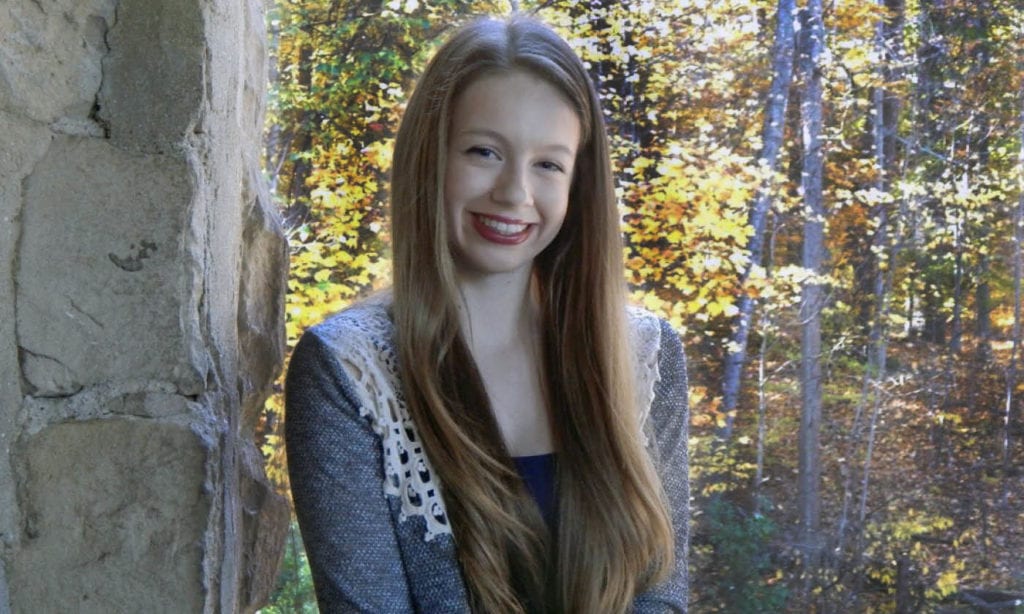
Carrying the Torch
I have been called a pizza bagel–the combination of a Catholic Italian and an Ashkenazi Jew. Over time, I have discovered the difficulty of discretely identifying the ratio of pizza to bagel. It is even more arduous when the pizza and the bagel have theologies that inherently contradict each other. Therefore, in a society that emphasizes fine lines and exact distinctions, my identity itself becomes a contradiction.
In the winter, my family tops our Christmas tree with the Star of David. I’ve recited the Lord’s Prayer; I’ve prayed in Hebrew. I attended preschool at a church, and my brother was a preschooler in a synagogue. Every week at Sunday morning mass, my maternal family donates money to the collection basket during the offertory. My paternal family has donated authentic Holocaust photographs to a local Jewish heritage museum. Growing up, none of this was contradictory; in fact, it all seemed complementary. My Jewish and Catholic identities did not cancel each other out but rather merged together.
However, the compatibility of my Catholic-Jewish identities was in upheaval when I decided to become acquainted with the Jewish community on campus. While attending Hillel events, I felt insecure because I did not share many of the experiences and knowledge of other Jewish students. Despite this insecurity, I continued to participate — until a good friend of mine told me that I was not Jewish enough because of my Catholic mother. She also said that families like mine were responsible for the faltering of Jewish culture. I wanted my identity to be validated. Instead, it was rejected. I withdrew and avoided not only my Jewish identity but also my identity as a whole.
I soon realized that this friend and I look at my situation using different filters. My Catholic-Jewish identities have evolved into a codependent relationship, and I am entitled to unapologetically embrace and explore both aspects of my identity. I realized that even without my friend’s validation of my identity, I still exist just the same. Any discredit of my Catholic-Jewish identities does not eliminate my blended nature. So, after a few months of avoiding my Jewish identity, I chose to embrace my roots; I resumed participating in the Jewish community on campus, and I have not stopped since.
Kayla DeVault’s YES! article “Native and European – How Do I Honor All Parts of Myself?” describes the obligation to one’s ancestral chain. The best way to fulfill this duty is to fully dedicate oneself to understanding the traditions that accompany those cultural origins. In this generation, my mother’s Catholic-Italian maiden name has no men to carry it on to the next generation. It is difficult to trace my last name past the mid-1900s because my Jewish ancestors shortened our surname to make it sound less Semitic, to be less vulnerable to persecution. Given the progressive fading of my family’s surnames, how do I continue the legacies of both family lines?
On behalf of my ancestors and for the sake of the generations still to come, I feel obligated to blend and simultaneously honor my Jewish and Catholic heritage to ensure that both prevail.
Now I know that whether I am sitting next to my Jewish father at my young cousin’s baptism, or whether I am sitting at the Passover Seder table with my mother’s Catholic parents, it is up to me to keep both flames of my ancestry burning bright. The least I can do is hold each family’s candle in my hands. Imagine the tremendous blaze I could create if I brought the flames of my two families together.
Madison Greene is a Communication Studies major at Kent State University. Madison is also pursuing a minor in Digital Media Production. She is currently the president of her sorority.
Powerful Voice Winner
Mariela Alschuler
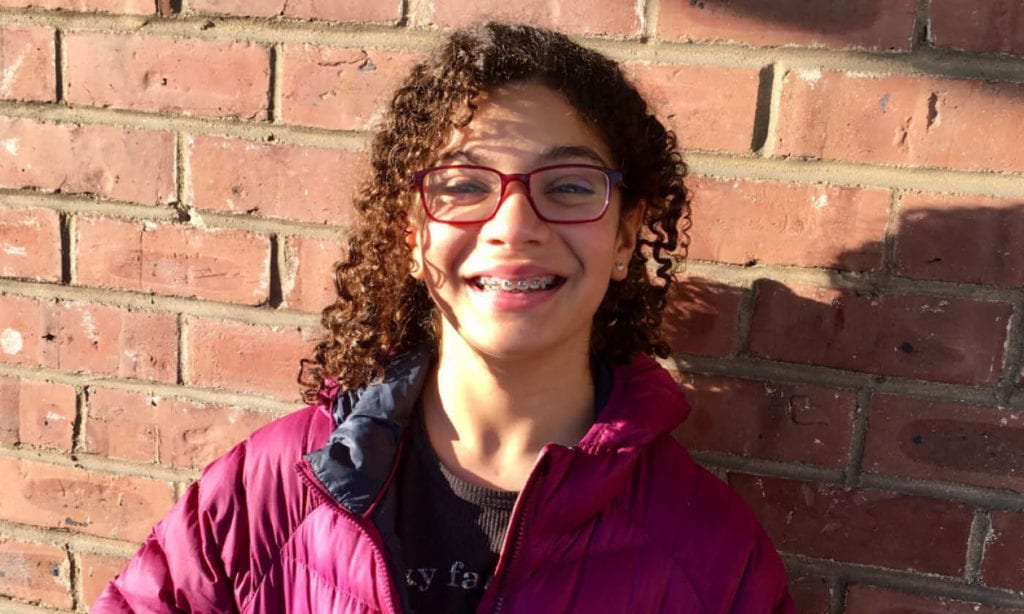
Behind My Skin
My roots go deeper than the ground I stand on. My family is from all over the world with extended branches that reach over whole countries and vast oceans.
Though I am from these branches, sometimes I never see them. My Dominican roots are obvious when I go to my abuela’s house for holidays. My family dances to Spanish music. I fill my plate with platanos fritos and my favorite rice and beans. I feel like a Dominican American girl. Maybe it’s the food. Maybe it’s the music. Or maybe it’s just the way that my whole family—aunts, uncles, grandparents, and cousins— laugh and talk and banter in my grandparents’ small, beautiful apartment.
Even though I am blood to this family, I stick out like a sore thumb. I stick out for my broken Spanish, my light skin, my soft, high-pitched voice and how I do my hair. I feel like I don’t belong to my beautiful, colorful family, a disordered array of painted jars on a shelf.
If my Dominican family is like a disorganized and vibrant shelf of colors, then my European family is a neat and sparse one with just a hint of color. For Christmas in New York, there are dozens of us crammed in the small apartment. For Thanksgiving in Massachusetts, there are rarely more than twelve people in the grandiose, pristine house that looks like something out of House Beautiful . I adore my grandparent’s house. It is expansive and neatly painted white. After growing up in a small house on a school campus and visiting my other grandparents’ small apartment in New York, I thought that their house was the greatest thing in the world. I would race up the stairs, then slide down the banister. I would sip Grandma’s “fancy” gingerbread tea, loving the feeling of sophistication. There, I could forget about the struggles of my Dominican family. I was the granddaughter of a wealthy, Jewish, Massachusetts couple rather than the granddaughter of a working-class second-generation Dominican abuela and abuelo from the Bronx.
I don’t fit in with my European family either. My dark skin and my wild hair don’t belong in this tidy family. In Massachusetts, the branches of my Dominican family, no matter how strong and extensive, are invisible. The same way my European roots are lost when I am in New York.
So what am I? For years I have asked myself this question. Wondering why I couldn’t have a simple garden of a family rather than the jungle that I easily get lost in. As Kayla DeVault says in her YES! article “Native and European—How can I honor all parts of myself?,” “Simply saying ‘I am this’ isn’t enough.” And it isn’t. My race, color, and ethnicity do not make up who I am. I am still a daughter. A sister. A cousin. A friend. My mixed identity does not make me less whole, less human. I may have lightly tanned skin and my lips may not form Spanish words neatly, but behind my skin is bright color and music. There is warm gingerbread tea and golden platanos fritos. There is Spanish singing from my abuelo’s speaker and “young people” songs that play from my headphones. There is a little, cozy apartment and a large, exquisite house. Behind my skin is more than what you can see. Behind my skin is what makes me me.
Mariela Alschuler is a seventh-grader at Ethical Culture Fieldston School and lives in the Bronx, New York. When she’s not in school, Mariela likes to read, write, do gymnastics, watch Netflix, and spend time with her friends and family. She hopes to be a doctor and writer when she grows up.
Reese Martin
University Liggett School, Grosse Point Woods, Mich.
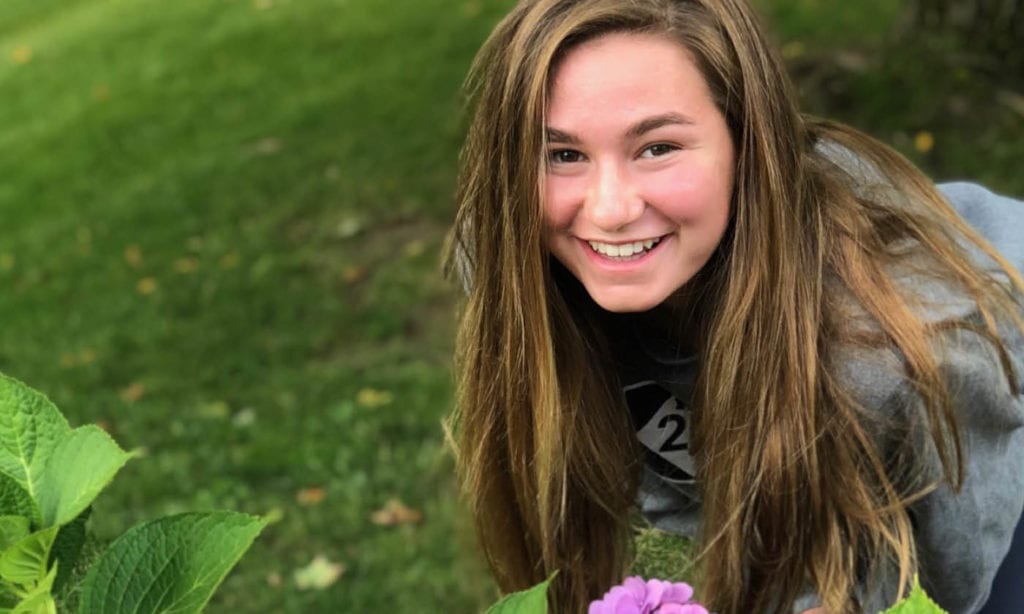
A True Irishman?
Similar to Kayla Devault in her YES! article “Native and European-How Do I Honor All Parts of Myself,” I hold holistic pride in my cultural identity. As a descendant of Irish immigrants, my childhood was filled with Irish folk music, laughter, and all things green. I remember being a toddler, sitting on my Popo’s lap wearing a shiny green, slightly obnoxious, beaded shamrock necklace. There, in the living room, I was surrounded by shamrocks hanging on the walls and decorations spread throughout, courtesy of my grandmother who always went overboard. My father and his siblings were Irish fanatics, as well. My aunt, whom I loved spending time with as a child, was notorious for wild face painting, ear-splitting music, and crazy outfits on St. Patrick’s Day. The holiday typically started in Detroit’s historic Corktown for the annual St. Patrick’s Day Parade with the promise of authentic Irish corned beef and soda bread at the Baile Corcaigh Irish Restaurant following the festivities. Charlie Taylor, a local Irish musician, belted folk songs from Baile Corcaigh’s makeshift stage. It was one of the few days a year my father and his large family came together. Although my aunt and grandparents have passed, our family’s Irish pride is eternal.
There was, however, one peculiar thing about our Irish heritage— none of my family looked classic Irish. My father and his five siblings have nearly black eyes and fairly dark skin, not the typical Irish traits of blue eyes and light skin. DeVault wrote, “When I was older, the questions came, which made me question myself.” I fell into a similar predicament, questioning my heritage. It truly came as a shock when a couple of my paternal aunts and several cousins took DNA tests through 23andMe and AncestryDNA. The results revealed the largest percentage of our ethnicity was Lebanese and Middle Eastern, not Irish.
It felt like a punch to the gut. I was clueless on how to move forward. According to the numbers, we possessed an insignificant amount of Irish blood. How was it possible to be wrong about such a huge part of my identity? Not only was I confused about my culture and history, but I also experienced a great deal of shame—not of my newfound Middle Eastern heritage, but the lack of Irish DNA, which I had previously held so close and felt so proud of. It felt as though I was betraying the memory of my late grandparents and aunt.
Even amidst my confusion, I found this new heritage intriguing; I was excited to explore all that my newly found Lebanese culture had to offer: unique foods, unfamiliar traditions, and new geography. In addition to the familiar boiled and mashed potatoes, my family now eats hummus and shawarma. I also know more about the basic facts, history, and government of Lebanon. One thing dampens my enthusiasm, however. I wonder how I can fully develop a love for my newly discovered culture without being too deliberate and appearing to be insensitive to cultural appropriation.
It is here, in the depths of uncertainty and intrigue, I relate most to DeVault’s question, “How do I honor all parts of myself?” Although my Irish ancestry may not be as authentic as I once believed, I still feel a strong connection to the Irish culture. I’ve found that to truly honor all pieces of my identity, I must be willing to accept every aspect of my ancestry. I don’t need to reject Lebanese ethnicity, nor disregard the Irish memories of my childhood. I am allowed to be everything all at once. At the end of the day, with both Irish culture and Lebanese heritage, I am still simply and perfectly me.
Reese Martin is a junior at University Liggett School in Grosse Pointe Woods, Michigan. Reese plays hockey and soccer, swims competitively and is a violinist in her school orchestra. She enjoys volunteering, especially peer tutoring and reading with young children.
Rowan Burba
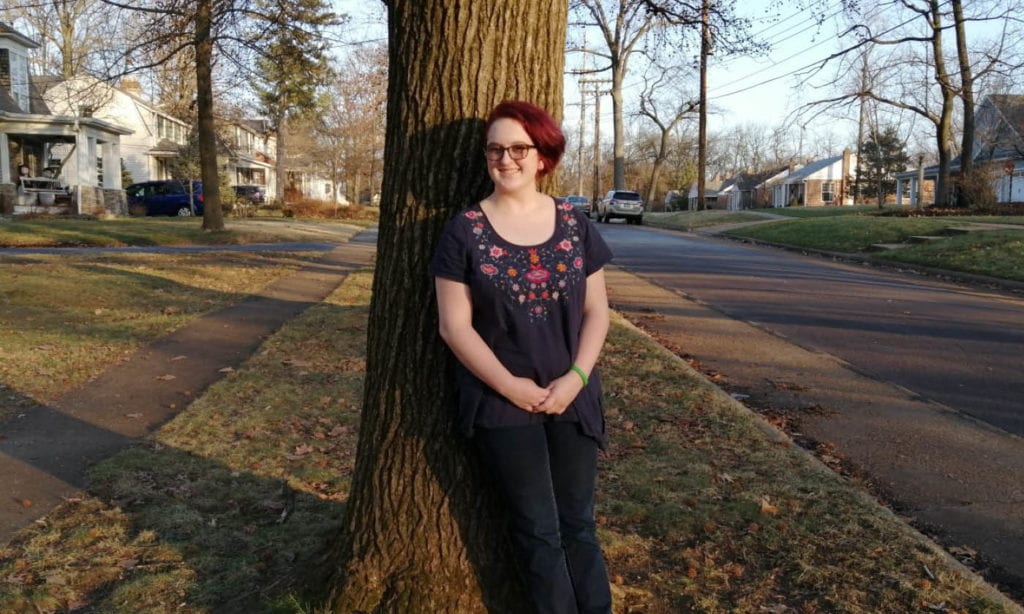
Saluting Shadows
On the floor, a murdered woman lays bloody and dead. Two young boys stare in horror at their dead mother. At only 10 years old, my great-grandfather experienced unfathomable suffering. A generation later, my grandfather and two great-uncles grew up under an abusive roof. My great-uncle Joe, the youngest of three boys, endured the worst of the abuse. Joe’s scarred brain altered during the sexual and emotional abuse his father subjected him to. From the time he was 18 months old, trusted adults of Joe’s community violated him throughout his childhood. These traumas spiraled into a century of silence, the silence I am determined to break.
My father’s lineage is littered with trauma. Our family doesn’t openly share its past. We constantly masquerade as “normal” so we can fit in, but the alienation we experience is understandable. In Kayla DeVault’s YES! article “Native and European—How Do I Honor All Parts of Myself?” she explains her numerous identities, which include Shawnee, Anishinaabe, Eastern European, Scottish, and Irish. Although I don’t have her rich ethnic ancestry, I question my roots just as she does. I have limited photos of my deceased relatives. There are only two prominent ones: my paternal grandmother as a child with her siblings and my maternal grandmother’s obituary photo. These frosted images hide the truth of my family’s history. They’re not perfect 4″ x 6″ moments frozen in time. They’re shadowed memories of a deeply disturbed past.
For 17 years, my family was clueless about our past family trauma. Two months ago, my great-aunt explained Joe’s story to me. Joe developed Dissociative Identity Disorder (DID) as a result of his abuse. By the age of 18, his brain contained 95 alters (fragments of his identity that broke off and developed into true individuals), causing Joe to appear as the “weird one,” the one who my family dismissed, the outcast of my dad’s childhood. My dad only learned one year ago, long after Joe died, about Joe’s DID. My family’s adamancy to hold secrets outweighed accepting and helping Joe. The shadows around these secrets quickly dispersed.
The silence and shame from a mother’s death a century ago still have a chokehold on my family today. My family appears a disaster to outsiders. My mom’s side is so religious they would never fathom a conversation about these harsh realities. In addition to Joe, my dad’s side has uncles who struggle with codependency and trauma from past abuses. Joe’s brother coped by latching onto another “normal” family, and my grandfather coped by never talking about issues. My parents married soon after my maternal grandmother and three of her four siblings died within a few weeks of each other. Despite years of therapy, my parents divorced when I was 11 years old. I grew up surrounded by dysfunction without recognizing it.
How do I honor my roots? I work to break the silence and stigmas of abuse and mental health. I’ve participated in therapy for about five years and have been on medicine for about two. I must reprogram my brain’s attachment to codependent tendencies and eliminate the silence within me. I’m working through my intrusive thoughts and diving into my family’s past and disrupting harmful old patterns. I’m stepping away from the shadows of my ancestors and into the light, ensuring that future generations grow up with knowledge of our past history of abuse and mental illness. Knowledge that allows us to explore the shadows without living in them. Knowledge that there’s more in life outside of the frames.
Rowan Burba, a junior at Kirkwood High School in Missouri, loves to participate as a witness in Mock Trial competitions, build and paint sets for the KHS theatre department, play viola in her school orchestra, and do crafts with kids. She is involved in politics and wants to help change the world for the better.
Mia De Haan
Estrella Mountain Community College, Avondale, Ariz.
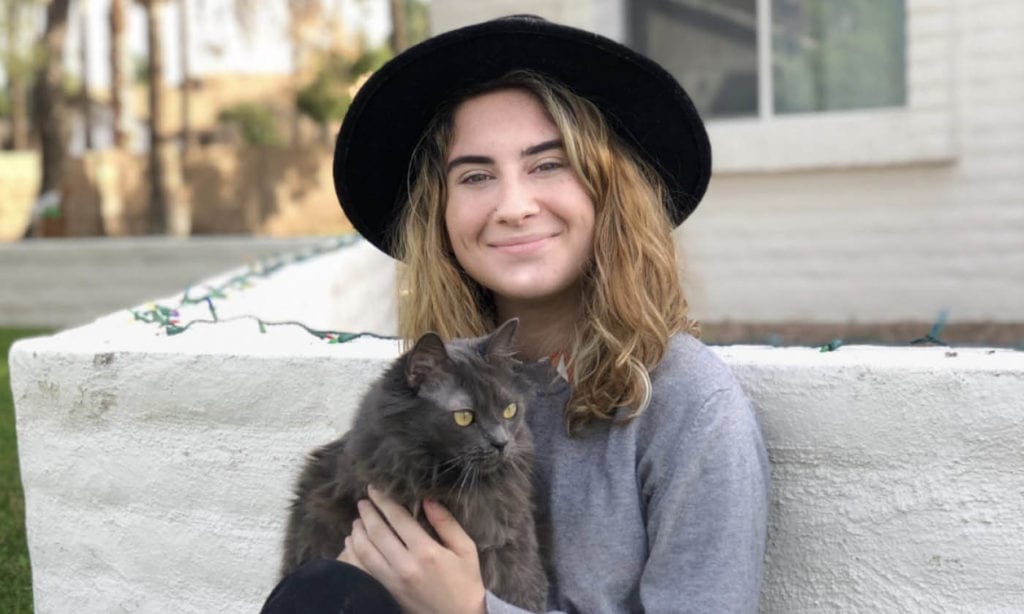
What Being a Part of the LGBTQ+ Community Means to Me
Being queer is that one thing about me I am most proud of, yet also most scared of. Knowing that I am putting my life at risk for the simplest thing, like being gay, is horrifying.
Let’s talk about my first crush. Her name was Laurel, and she was always in front of me when we lined up after recess in first grade. I remember wishing that girls could marry girls because she had the prettiest long, blonde hair. I left these thoughts in the back of my head until middle school. I couldn’t stop staring at a certain girl all day long. That one girl who I would have sleepovers with every weekend and slow dance with at school dances—but only as friends. She changed my life. She was the first person to tell me that I was accepted and had no reason to be afraid.
Being part of the LGBTQ+ community isn’t all rainbows and Pride parades. It is watching your family turn away from you in disgust but never show it on their faces. It’s opening Twitter and learning that it’s still illegal to be gay in 71+ countries. It’s astonishing that we had to wait until 2015 for the U.S. Supreme Court to make it legal to marry in all 50 states.
My identity is happiness yet pain, so much pain. I hated myself for years, shoved myself back into a closet and dated my best friend for two years because maybe if I brought a boy home my family would wish me “Happy Birthday” again or send me Christmas presents like they do for my brother and sister.
When I began to explore my identity again, I asked myself, “Am I safe?” “Will I still be loved?” I was horrified. I am horrified. Legally, I am safe, but I am not safe physically. I can still be beaten up on the streets for holding a girl’s hand. Protesters at Pride festivals are still allowed to shout profanities at us and tell us that we are going to burn in hell—and the cops protect them. I am not safe mentally because I still allow the words of people and homophobes in the media and on my street get inside of my head and convince me that I am a criminal.
When I read Kayla DeVault’s YES! article “Native and European—How Do I Honor All Parts of Myself?” I could feel how proud DeVault is to be Shawnee and Irish. While we do not share the same identity, I could tell that we are the same because we both would do anything for our cultures and want to show our pride to the rest of the world.
I honor my LGBTQ+ identity by going to Pride festivals and events. I also participate in an LGBTQ+ church and club, where, for years, was the only place I could be myself without the fear of being outed or harmed. Whenever I hear people being ignorant towards my community, I try to stay calm and have a conversation about why our community is great and valid and that we are not doing anything wrong.
I don’t know if the world will ever change, but I do know that I will never change my identity just because the world is uncomfortable with who I am. I have never been one to take risks; the idea of making a fool of myself scares me. But I took one because I thought someone might listen to my gay sob story. I never expected it to be heard. If you have your own gay sob story, I will listen, and so will many others, even if you don’t realize it yet.
Amelia (Mia) De Haan was born and raised in Phoenix, Arizona. Mia has devoted her entire life to art, specifically theatre and dance. While she has struggled to figure out what she wants to do for the rest of her life, she does know that she wants to inspire people and be a voice for the people of the LGBTQ+ community who still feel that no one is listening. Mia dreams of moving to New York with her cat Loki and continuing to find a way to inspire people.
Laura Delgado
Spring Hill College, Mobile, Ala.
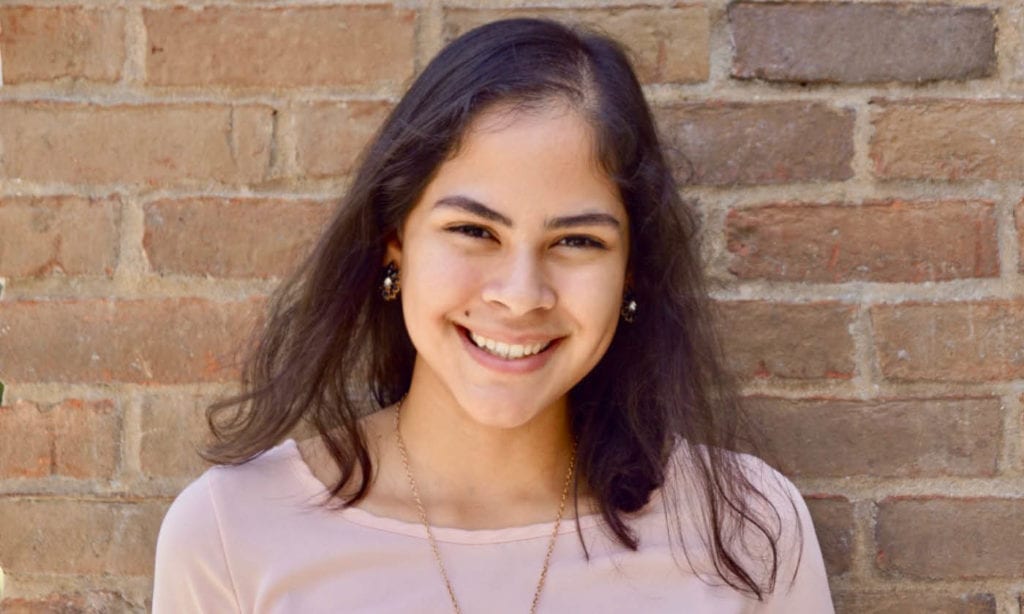
I moved to the United States when I was eight years old because my father knew Venezuela was becoming more corrupt. He wanted to give his family a better life. My sense of self and belonging was wiped clean when I moved to the United States, a country that identified me and continues to label me as an “alien.” On U.S Citizenship and Immigration Services (USCIS) documents, I am Alien Number xxx-xxx-xxx. I will not let that alien number define who I am: a proud Venezuelan and American woman.
In her YES! article “Native and European—How Do I Honor All Parts of Myself?” author Kayla DeVault says that “to truly honor [her] heritage, [she] found [she] must understand and participate in it.” This is why during Christmas I help my mom make hallacas (a traditional Venezuelan dish made out of cornmeal, stuffed with beef, pork, chicken, raisins, capers, and olives, wrapped in a banana leaf that is boiled to perfection), pan de jamón (a Christmas bread filled with ham, cheese, raisins, and olives—the perfect sweet and salty combination, if you ask me), and ensalada de gallina (a chicken, potatoes, and green apple salad seasoned with mayonnaise, salt, and pepper). While the gaitas (traditional Venezuelan folk music) is playing, we set up the Christmas tree and, under it, the nativity scene. The smell of Venezuelan food engulfs our small apartment. Every time I leave the house, the smell of food sticks to me like glue, and I love it.
We go to our fellow Venezuelan friend’s house to dance, eat, and laugh like we were back in Venezuela. We play bingo and gamble quarters as we talk over each other. My favorite thing is how we poke fun at each other, our way of showing our love. There is nothing better than being surrounded by my Venezuelan family and friends and feeling like I belong.
My ancestors are Spanish settlers, West African slaves, and Indigenous Venezuelans. To my peers, I am a Latina woman who can speak Spanish and comes from a country they have never heard of. To my family, I am a strong and smart Venezuelan woman who is succeeding in this country she calls home.
I was immediately an outcast as a young newcomer to this country. I was the new, exotic girl in class who did not speak a word of English; all of that led to bullying. Growing up in a country that did not want me was—and still is—hard. People often ask me why I would ever want to identify as American. My answer to their question is simple: This is my home. I knew that the chances of us going back to Venezuela were slim to none so I decided to make this country my home. At first, I fought it. My whole life was back in Venezuela. Eventually, I made lifelong friends, had my first kiss and my first heartbreak. I went to all of the homecoming and prom dances and made memories with my best friends to last me a lifetime. Yes, I was born in Venezuela and the pride of being a Venezuelan woman will never be replaced, but my whole life is in the United States and I would never trade that for the world.
I am Venezuelan and I am American. I am an immigrant and I am Latina. The United States government will always know me as Alien Number xxx-xxx-xxx, but they will not know that my heritage is rich and beautiful and that I am a proud Venezuelan and a proud American woman.
Laura Delgado is a Junior at Spring Hill College in Mobile, Alabama, majoring in Graphic Design and minoring in Hispanic Studies. Laura and her family migrated to the United States from Venezuela in 2007 to escape the Chavez regime. She is a DACA recipient and a first-generation college student who has a passion for graphic design and hopes to one day open her own interior design company.
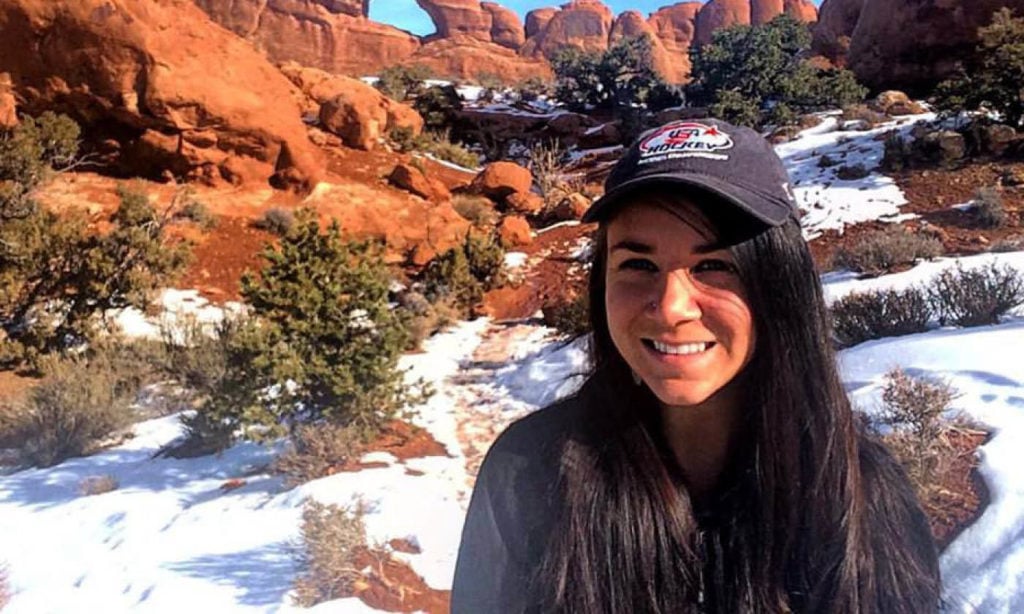
Dear every human who wrote in this contest or thought about writing,
I want to start by addressing all of you.
I think stepping out of your comfort zone and writing your truth—even if you think you aren’t a writer— is a brave thing to do.
I want you to understand that not being selected does not mean your story isn’t valid or that your identity wasn’t “enough.” Remember, you’re always enough. You’re enough to God, to Allah, to your Higher Power, to the Flying Spaghetti Monster in the sky, to your parents, and to your ancestors who endured long enough for you to come into existence.
As I read through the various essays, I saw a common thread of food . Whether it’s the pierogi sales at churches in Pittsburgh, the neverias around Phoenix, or the soul food joints in Birmingham, the history of our ancestors’ movements have left their impressions in our cuisine.
Another theme I found in several essays was a “uniformed diaspora.” Some of you talked about not being able to fully trace your lineage, having your history stolen by some method of political racism, and even grappling with finding that your genetics are not all you thought they were. As a Native person, I know all too well that we had much taken from us. I know that the conquerors wrote our history, so ours is recorded with bias, racism, and flippancy.
And now to the essay winners:
To Susanna: Obrigada for your story. I encourage you to keep exploring your identity and how it informs your existence today on Lenape, Rockaway, and Canarsie traditional lands (New York City). Your imagery reflects saudades well. I think there is an intriguing and untapped story embedded in your father’s experience from Lebanon, and I encourage you to explore how that merges with your Brazilian identity.
When I read that passage about Starbucks, I thought about how the average young American seems to be private in public, but public in private—meaning this culture and its technology isolates us (private) when we are around other people (public), yet so many of us share most about ourselves on social media (public) where we can pick and choose if we want to engage with someone (private). By the way, I, too, played lacrosse… Did you know it has Indigenous roots?
To Cherry: 非常感谢你! Don’t listen to the American stereotypes of who you are, as hard as that can be. You sadly may always hear them, but hearing is not the same as listening. People undermine the things they don’t understand because the things they don’t understand scare them. While it is not your job to feel you have to educate them, you do have the freedom to choose how you navigate those spaces.
I understand how it may feel inauthentic to learn how to make traditional foods like zongzi from a YouTube video. For me, I have had to learn beading and other crafts because I was too ashamed to learn them when I had the elders still in my life. I tell young folk to know their elders now while they can. Furthermore, please speak every language no matter how imperfect because it’s a gift. Also, I’ll eat your zongzi any day, even if all the rice falls out!
To Keon: The imagery and symbols of slavery you use, powerfully describe a revisionist history that further blocks access to what would be a culturally-rich ancestry.
I remember standing on the shores of Ouidah, Benin, from where the majority of slaves left, looking through La Porte du Non Retour (The Door of No Return) memorial, and hearing a local say, “Our relatives, they left these shores for the ships and then… we never heard from them again.” And so we come to realize our stories are known only so far as they have been carried.
I see hope in the way you have embraced your roots as your branches to move forward. I believe that, in looking towards your branches, you have actually found your roots. You are a product of all the stories, told and untold, remembered and forgotten. I encourage you to keep writing and exploring how your seemingly contradicting and somewhat unknown roots shaped your ancestors and shape their product: you. Don’t hold back.
To Madison: Grazie and תודה. First of all, pizza bagels are delicious… just saying… talk about the best of both worlds! You write about the challenge of fitting into your communities, and I can certainly see how religious differences can become contentious.
I am sorry that you had a negative Hillel experience. In the end, we can’t let the persecutors steal our ancestral identities from us because that allows them to win. Cultures are fluid, not rigid and defined as peers might bully us into thinking. It’s rotten when people label us with things like “pizza bagel,” but if you boldly embrace it, you can turn it on its head. So I encourage you to be the smartest, wittiest, and most deliciously confident pizza bagel out there, writing your experience for all to read!
To Laura: Gracias , you write with a motif of sorts, one that conflates your identity to a number and the label of “alien.” For people in the United States to be dismissive of immigrants and judgmental of their cultures and languages is for the same people to forget their own origins, their own stories, and their own roles (as benefactors or as victims) in this age-old system of oppression for gain. It is also rather ironic that we call people “aliens;” unless they are from an Indigenous nation. Are not nearly all Americans “aliens” to some degree?
You write about being bullied as the new, exotic girl in school and I have also experienced that as my family moved around a bit growing up; however, I have also had the privilege to speak English.
It’s sad that these experiences are still so proliferate, and so I think it is vital that people like you share their experiences. Perhaps your background can inform how you think about spaces as an interior designer.
To Mariela: Gracias and תודה for the story you shared. You write about a complex existence that is a mix of poor and wealthy, white and brown, warm and cool. Learning to navigate these contrasting sides of your family will help you work with different kinds of people in your future.
I can understand your point about feeling out of place by your skin color. Lighter skin is largely considered a privilege in society, yet for those of us with non-white heritages, it can make us feel like we don’t belong amongst our own family. We have to walk a fine line where we acknowledge we may be treated better than our relatives in some circumstances but we have to sit with the feeling of not being “brown enough” other times. I encourage you to keep exploring your branches and sharing your feelings with your relatives about these topics. Perhaps one day you can use your deep understanding of human relations to inform your bedside manner as a doctor!
To Mia: Thank you for your brave piece, despite your fears. Your emotional recollection about the first girl you loved is very touching and powerful.
I am sorry that you don’t feel as though you are treated the same by your family on account of your identity and that you have to take extra steps to be accepted, but I believe your continuing to be your authentic self is the only way to prove you mean what you mean.
I hope the utmost safety and acceptance for you. I also thank you for seeing and relating to my pride that I have for myself, and I encourage you to consider creative outlets— maybe even podcast hosting—to uplift your story and the stories of others, spread awareness, and facilitate change.
To Reese: Go raibh maith agat . That’s how you thank a singular person in Irish, if you didn’t know already. I enjoyed your piece because, of course, we have an Irish connection that I understand.
I find it pretty interesting that you came back with a lot of Lebanese results in your family tests. Understand those tests only represent the inherited genes, so if both of your parents were a quarter Irish but three-quarters Lebanese, for example, you would get half of each of their genes. You might get half Lebanese from both and you would appear full Lebanese—or any other variation. My point is those tests aren’t exact reports.
I am excited you have found new aspects of your heritage and I hope you will continue to explore—as best you can—what your ancestral history is. And, by the way, I, too, play hockey and the violin—fine choices!
To Rowan: Many families put up a facade, and it’s only the brave ones, like you, addressing the trauma head-on who will be able to break the cycle that causes intergenerational trauma.
When we explore the parts of our identity, many of us may find how much trauma —including historic policy, racism, and displacement—has impacted our ancestors, perhaps centuries upon centuries ago. Learning about my family history and about religious factors has revealed stories of abuse and secrets that have been hushed wildly, even within my immediate family. Photos can be sad when we know the stories behind them and even when we never knew the person; they’re still a part of us and we can honor them by remembering them. I think you choosing to write about your Uncle Joe and the effects of trauma in your family— especially as you process and heal yourself—will be a tremendous resource both internally and for others. Thank you for sharing and I hope you find happiness in those frames.
Again, thank you all for your essays. It is exciting to see the youth writing. I am grateful for my piece to have been chosen for this contest and, I hope I’ve encouraged readers to consider every part that makes up their whole and how it has informed their life experiences.
Kayla DeVault
“ In seventh grade, I went to an affinity group meeting. And all I remember was being called a bad Asian again and again. I was called a bad Asian because I couldn’t use chopsticks. I was called a bad Asian because I didn’t know what bubble tea or K-pop was. Time and again, I was called a bad Asian because I didn’t know the things I was expected to know, and I didn’t do the things that I was expected to do. That meeting made me truly question my identity. “ . —Sebastian Cynn, Ethical Culture Fieldston Middle School, Bronx, N.Y. Click here to read the entire essay.
“It’s difficult being Dominican but born and raised in New York. I’m supposed to speak fluent Spanish. I’m supposed to listen to their music 24/7, and I’m supposed to follow their traditions. I’m supposed to eat their main foods. I’m unique and it’s not only me. Yes, I may not speak Spanish. Yes, I may not listen to their kind of music, but I don’t think that defines who I am as a Dominican. I don’t think I should be discriminated for not being the same as most Dominicans. Nobody should be discriminated against for being different from the rest because sometimes different is good. “ —Mia Guerrero, KIPP Washington Heights Middle School, New York, N.Y. Click here to read the entire essay.
When I hang out with some of my older friend groups, which are mainly white, straight kids, I don’t mention that I’m Asian or Gay, but as soon as I’m with my friends, I talk about my identifiers a lot. A lot of them are part of the LGBTQ+ community, and 11 out of 14 of them are a person of color. With my grandparents, I am quieter, a good Asian grandchild who is smart, gets good grades, is respectful. And I don’t act “Gay.” … Why do I have to act differently with different people? Why do I only feel comfortable with all of my identities at school?
—Gillian Okimoto, Ethical Culture Fieldston Middle School, Bronx, N.Y. Click here to read the entire essay .
“ Torah, Shema, yarmulke, all important elements of Jewish identity—except for mine. All these symbols assume the existence of a single God, but that doesn’t resonate with me. Religion is a meaningful part of my family’s identity. After all, wanting to freely practice their religion was what brought my great-grandparents to America from Eastern Europe. Being very interested in science, I could never wrap my head around the concept of God. Can I be Jewish while not believing in God? “ —Joey Ravikoff, Ethical Culture Fieldston Middle School, Bronx, N.Y. Click here to read the entire essay.
“ Yes, I am transgender, but I am also a son, a friend, an aspiring writer, and a dog trainer. I love riding horses. I’ve had the same volunteer job since sixth grade. I love music and trips to the art museum. I know who I am and whether other people choose to see me for those things is out of my control. Holidays with my family feels like I’m suffocating in a costume. I’ve come out twice in my life. First, as a lesbian in middle school. Second, as a transgender man freshman year. I’ve gotten good at the classic sit-down. With hands folded neatly in front of me, composure quiet and well-kept, although I’m always terrified. “ —Sebastian Davies-Sigmund, Kirkwood High School, Kirkwood, Mo. Click here to read the entire essay.
“ No longer do I wish to be stared at when civil rights and slavery are discussed. In every Socratic seminar, I shudder as expectant white faces turn to mine. My brown skin does not make me the ambassador for Black people everywhere. Please do not expect me to be the racism police anymore. Do not base the African American experience upon my few words. Do not try to be relatable when mentioning Hannukah is in a few days. Telling me you tell your White friends not to say the N-word doesn’t do anything for me. “ —Genevieve Francois, Kirkwood High School, Kirkwood, Mo. Click here to read the entire essay.
“ I often walk into the kitchen greeted by my mother sitting on her usual stool and the rich smells of culture—the spicy smell of India, the hearty smell of cooked beans, or the sizzling of burgers on the grill. Despite these great smells, I find myself often yearning for something like my friends have; one distinct culture with its food, people, music, and traditions. I don’t have a one-click culture. That can be freeing, but also intimidating . People who know me see me as a fraction: ¼ black, ¾ white, but I am not a fraction. I am human, just human. “ —Amaela Bruce, New Tech Academy at Wayne High School, Fort Wayne, Ind. Click here to read the entire essay.
“‘We just don’t want you to go to hell. ‘ I am not an atheist. I am not agnostic. I have no religion nor do I stand strong in any one belief. My answer to the mystery of life is simple: I don’t know. But I live in a world full of people who think they do. There will be a day when that capital G does not control my conversations. There will be a day when I can speak of my beliefs, or lack thereof, without judgment, without the odd stare, and without contempt. The day will come when a life without religion is just another life. That is the day I wait for. That day will be Good. “ —Amara Lueker, New Tech Academy at Wayne High School, Fort Wayne, Ind. Click here to read the entire essay.
“¡Correle!” yell the people around him. He runs to the grass, ducks down and starts to wait. He’s nervous. You can smell the saltiness of sweat. He looks up and hears the chopping of helicopter blades. You can see the beam of light falling and weaving through the grass field … out of a group of thirteen, only four were left hidden. He and the others crossed and met up with people they knew to take them from their own land down south to the opportunity within grasp up north. That was my father many years ago. I’ve only asked for that story once, and now it’s committed to memory. “ —Luz Zamora, Woodburn Academy of Art Science & Technology, Woodburn, Ore. Click here to read the entire essay.
“ How do I identify myself? What do I connect to? What’s important to you? Here’s the answer: I don’t. Don’t have a strong connection. Don’t know the traditions. Don’t even know the languages. I eat some of the food and kinda sorta hafta** the major holidays but thinking about it I don’t know anything important. I think that the strongest connection to my family is my name, Mei Li (Chinese for “beautiful” Ana (a variation on my mother’s very American middle name: Anne) Babuca (my father’s Mexican last name). “ —Mei Li Ana Babuca, Chief Sealth International High School, Seattle, Wash. Click here to read the entire essay.
“ My whole life I have felt like I don’t belong in the Mexican category. I mean yeah, I’m fully Mexican but, I’ve always felt like I wasn’t. Why is that you ask? Well, I feel that way because I don’t know Spanish. Yes, that’s the reason. It may not sound like a big deal, but, for me, I’ve always felt disconnected from my race. I felt shameful. I felt like it was an obligation to know what is supposed to be my mother tongue. My whole family doesn’t really know fluent Spanish and that has always bothered me growing up. “ —Yazmin Perez, Wichita North High School, Wichita, Kan Click here to read the entire essay.
“ I believe differently from DeVault, who believes it’s important to connect and participate with your heritage. I believe that our personal pasts have more to do with who we are as people than any national identity ever could. Sure, our heritage is important, but it doesn’t do nearly as much to shape our character and perspective as our struggles and burdens do. Out of all my past experiences, illness—and especially mental illness—has shaped me. “ —Chase Deleon, Central York High School, York, Penn. Click here to read the entire essay.
“ … I can now run that whole grape leaf assembly line, along with other traditional plates, by myself. I have begun speaking out on current topics, such as Middle-Eastern representation in acting. I have become so much closer with my relatives and I don’t mind busting a move with them on the dance floor. Although a trip to Syria is not in my near future, DeVault made me realize that a connection to your geographical cultural roots is important. According to my aunt, I have become a carefree, happy, and more passionate person. I no longer feel stuck in the middle of ethnicity and society. Becoming one with and embracing my identity truly is ‘A Whole New World.’” —Christina Jarad, University Ligget School, Grosse Pointe Woods, Mich. Click here to read the entire essay.
“While my bow is not made of wood and my arrows lack a traditional stone tip, the connections are always present, whether I am stalking bull elk in the foothills of the Rockies or fly fishing in the mystical White River. The methods and the technologies may be different, but the motivations are the same. It is a need to be connected to where my food originates. It is a desire to live in harmony with untouched lands. It is a longing to live wild, in a time where the wild is disappearing before our eyes. “ —Anderson Burdette, Northern Oklahoma University, Stillwater, Okla. Click here to read the entire essay.
“Black people always say that White people don’t use seasoning. This saying is one of those sayings that I always heard, but never understood. I am Black, but I was adopted into a White household … Even though I identify as a Black woman, all my life I have struggled with breaking into the Black culture because other people around me consciously or unconsciously prevent me from doing so. “ —Brittany Hartung, Spring Hill College, Mobile, Ala. Click here to read the entire essay.
We received many outstanding essays for the Fall 2019 Student Writing Competition. Though not every participant can win the contest, we’d like to share some excerpts that caught our eye:
How can other people say that I only have one identity before I can even do that for myself? —Arya Gupta, Ethical Culture Fieldston Middle School, Bronx, N.Y.
‘Middle Child’ by J. Cole blasts through the party. Everyone spits the words like they’re on stage with him. J. Cole says the N-Word, and I watch my Caucasian peers proudly sing along. Mixed Girl is perplexed. Black Girl is crestfallen that people she calls friends would say such a word. Each letter a gory battlefield; White Girls insists they mean no harm; it’s how the song’s written. Black Girl cries. —Liz Terry, Kirkwood High School, Kirkwood, Mo.
To me, valuing my ancestors is a way for me to repay them for their sacrifices. —Jefferson Adams Lopez, Garrison Middle School, Walla Walla, Wash.
A one-hour drive with light traffic. That’s the distance between me and my cousins. Short compared to a 17-hour flight to the Philippines, yet 33 miles proved to create a distance just as extreme. Thirty-three miles separated our completely different cultures. —Grace Timan, Mount Madonna High School, Gilroy, Calif.
What does it mean to feel Korean? Does it mean I have to live as if I live in Korea? Does it mean I have to follow all the traditions that my grandparents followed? Or does it mean that I can make a decision about what I love? —Max Frei, Ethical Culture Fieldston Middle School, Bronx, N.Y.
Not knowing feels like a safe that you can’t open (speaking about her ancestry) . —Madison Nieves-Ryan, Rachel Carson High School, New York, N.Y.
As I walked down the halls from classroom to classroom in high school, I would see smiling faces that looked just like mine. At every school dance, in every school picture, and on every sports team, I was surrounded by people who looked, thought, and acted similar to me. My identity was never a subject that crossed my mind. When you aren’t exposed to diversity on a daily basis, you aren’t mindful of the things that make you who you are. —Jenna Robinson, Kent State University, Kent, Ohio
When my Great-Great-Grandfather Bill was 12, he ran away to work with his uncles. And then when he was older and married, he called up his wife and said, “Honey, I’m heading off to college for a few years. Buh-Bye!” Because of his adventurous spirit, Bill Shea was the first Shea to go to college. Ever since my mom told me this story, I’ve always thought that we could all use a little Bill attitude in our lives. —Jordan Fox, Pioneer Middle School, Walla Walla, Wash.
I defy most of the stereotypes of the Indian community. I’m a gender-fluid, American, Belizean kid who isn’t very studious. I want to be a writer, not a doctor, and I would hang out with friends rather than prepare for the spelling bee. —Yadna Prasad, Ethical Culture Fieldston Middle School, Bronx, N.Y.
While my last name may be common, the history behind my family is not. A line of warriors, blacksmiths, intellectuals, and many more. I’m someone who is a story in progress. —Ha Tuan Nguyen, Chief Sealth International High School, Seattle, Wash.
My family is all heterosexual. I did not learn about my identity from them. LGBTQ+ identity is not from any part of the world. I cannot travel to where LGBTQ+people originate. It does not exist. That is the struggle when connecting with our identities. It is not passed on to us. We have to find it for ourselves. —Jacob Dudley, Kent State University, Kent, Ohio
My race is DeVault’s childhood kitchen, so warm and embracing. Familiar. My sexuality is DeVault’s kitchen through adulthood: disconnected. —Maddie Friar, Kirkwood High School, Kirkwood, Mo.
At school, I was Dar-SHAW-na and at home DAR-sha-na. There were two distinct versions, both were me, but neither were complete. \ —Darshana Subramaniam, University Liggett School, Grosse Pointe Woods, Mich.
I do not think that heritage and ethnic roots are always about genetics. It is about the stories that come with it, and those stories are what shapes who you are. —Lily Cordon-Siskind, Ethical Culture Fieldston Middle School, Bronx, N.Y.
In my sixteen-year-old mind, the two ethnicities conflicted. I felt like I couldn’t be both. I couldn’t be in touch with Southern roots and Cuban ones at the same time. How could I, they contradict each other? The Cuban part of me ate all my food, was loud and blunt, an underdog and the Southerner was reserved, gentle, and polite. —Grace Crapps, Spring Hill College, Mobile, Ala.
I thought I was simply an American. However, I learned that I am not a jumbled mix of an untraceable past, but am an expertly woven brocade of stories, cultures, and hardships. My ancestors’ decisions crafted me…I am a story, and I am a mystery. —Hannah Goin, Pioneer Middle School, Walla Walla, Wash.
We received many outstanding essays for the Fall 2019 Student Writing Competition, and several students got clever and creative with their titles. Here are some titles that grabbed our attention:
“A Mixed Child in a Mixed-Up Family” Caitlin Neidow, Ethical Culture Fieldston Middle School, Bronx, N.Y.
“Diggin’ in the DNA” Honnor Lawton, Chestnut Hill Middle School, Liverpool, N.Y.
“Hey! I’m Mexican (But I’ve Never Been There)” Alexis Gutierrez-Cornelio, Wellness, Business & Sports School, Woodburn, Ore.
“What It Takes to Be a Sinner” Amelia Hurley, Kirkwood High School, Kirkwood, Mo.
“Mirish” Alyssa Rubi, Chief Sealth International High School, Seattle, Wash.
“Nunca Olvides de Donde Vienes ” ( Never forget where you came from ) Araceli Franco, Basis Goodyear High School, Goodyear, Ariz.
“American Tacos” Kenni Rayo-Catalan, Estrella Mountain Community College, Avondale, Ariz.
“Corn-Filled Mornings and Spicy Afternoons” Yasmin Medina, Tarrant County Community College, Fort Worth, Tex.
Get Stories of Solutions to Share with Your Classroom
Teachers save 50% on YES! Magazine.
Inspiration in Your Inbox
Get the free daily newsletter from YES! Magazine: Stories of people creating a better world to inspire you and your students.
If you're seeing this message, it means we're having trouble loading external resources on our website.
If you're behind a web filter, please make sure that the domains *.kastatic.org and *.kasandbox.org are unblocked.
To log in and use all the features of Khan Academy, please enable JavaScript in your browser.
Special topics in art history
Course: special topics in art history > unit 1, what is cultural heritage.
- Cultural heritage “in Crisis”
- Blow it up: cultural heritage and film
- ARCHES advisors
Tangible and intangible cultural heritage
The importance of protecting cultural heritage, whose cultural heritage, want to join the conversation.
- Upvote Button navigates to signup page
- Downvote Button navigates to signup page
- Flag Button navigates to signup page


Essay on Heritage
Students are often asked to write an essay on Heritage in their schools and colleges. And if you’re also looking for the same, we have created 100-word, 250-word, and 500-word essays on the topic.
Let’s take a look…
100 Words Essay on Heritage
Understanding heritage.
Heritage refers to traditions, objects, and culture inherited from past generations. It encompasses everything from buildings and artworks to languages and values.
Types of Heritage
There are two main types: tangible and intangible. Tangible heritage includes physical artifacts like monuments, whereas intangible heritage involves traditions, language, and knowledge.
Importance of Heritage
Heritage helps us understand our history and identity. It provides a sense of belonging and continuity, linking us to our ancestors.

Preserving Heritage
Preserving heritage is crucial. It ensures future generations can learn from the past and appreciate their roots.
Also check:
- Paragraph on Heritage
250 Words Essay on Heritage
Heritage is a multifaceted concept, embodying the tangible and intangible aspects of our past. It is the legacy we inherit from our ancestors and pass on to future generations. This inheritance can be in the form of cultural traditions, historical monuments, folklore, and natural landscapes.
The Importance of Heritage
Heritage plays a crucial role in defining our identity and sense of belonging. It provides a link to our roots and offers a sense of continuity and stability in a rapidly changing world. It is a source of pride and inspiration, reminding us of our collective achievements and struggles.
Heritage and Education
The study of heritage is an essential part of education. It helps students understand their history, culture, and the evolution of societal norms. It fosters respect for diversity and encourages a sense of global citizenship.
The preservation of heritage is a shared responsibility. It involves active participation from individuals, communities, and governments. While governments can enact laws to protect heritage sites, individuals and communities can contribute by promoting their local heritage and educating others about its importance.
Heritage is a priceless treasure that enriches our lives in countless ways. It is a testament to our past, a guide for our present, and a beacon for our future. Therefore, understanding, appreciating, and preserving our heritage is vital for our growth as individuals and as a society.
500 Words Essay on Heritage
Heritage refers to the legacy that is inherited from past generations, maintained in the present, and bestowed to future generations. It encompasses tangible and intangible elements, including cultural traditions, historical sites, artifacts, and natural landscapes. Heritage is not just a testament to human achievement; it also provides a sense of identity and continuity in a rapidly changing world.
The Tangible and Intangible Aspects of Heritage
Tangible heritage comprises physical artifacts and locations that we can touch, see, and experience. These include buildings, monuments, landscapes, books, works of art, and artifacts. They represent the physical embodiment of a culture’s history and achievements.
On the other hand, intangible heritage includes practices, representations, expressions, knowledge, and skills that communities recognize as part of their cultural heritage. Examples include oral traditions, performing arts, social practices, rituals, and festive events. These intangible aspects are often more challenging to preserve than tangible ones, as they are embedded in community practices and often require continued transmission to remain alive.
The Importance of Heritage Preservation
Heritage preservation is crucial for several reasons. Firstly, it provides a tangible connection to the past. By preserving and studying heritage, we can gain a deeper understanding of our ancestors’ lives and the historical events that shaped our world.
Secondly, heritage preservation contributes to identity formation. It allows us to understand our roots and gives us a sense of belonging. It also fosters respect for cultural diversity and human creativity, promoting social cohesion and sustainable development.
Lastly, heritage can have significant economic benefits. Heritage tourism, for instance, can bring considerable income to communities, contributing to their economic sustainability.
Challenges in Heritage Preservation
Despite its importance, heritage preservation faces several challenges. Rapid urbanization and industrialization often lead to the destruction of heritage sites. Climate change also poses a significant threat, causing damage to many sites through rising sea levels, increased temperatures, and extreme weather events.
Furthermore, preserving intangible heritage can be particularly challenging. As societies modernize, many traditional practices and knowledge are being lost. Ensuring their transmission to younger generations is vital for their survival.
The Role of Individuals and Communities
Individuals and communities play a crucial role in heritage preservation. They can advocate for the protection of heritage sites, participate in preservation efforts, and promote the value of heritage through education and community engagement. By doing so, they can help ensure that our rich and diverse heritage is preserved for future generations to appreciate and learn from.
In conclusion, heritage is a precious link to our past, a key to understanding our present, and a gift to our future. It is our collective responsibility to preserve and pass it on, ensuring that the lessons, achievements, and beauty of our ancestors continue to enrich our world.
That’s it! I hope the essay helped you.
If you’re looking for more, here are essays on other interesting topics:
- Essay on World Heritage Day
- Essay on Cultural Heritage
- Essay on Cultural Criticism
Apart from these, you can look at all the essays by clicking here .
Happy studying!
Leave a Reply Cancel reply
Your email address will not be published. Required fields are marked *
Save my name, email, and website in this browser for the next time I comment.

131 Heritage Essay Topic Ideas & Examples
🏆 best heritage topic ideas & essay examples, 👍 good essay topics on heritage, ✅ simple & easy heritage essay titles, 💡 interesting topics to write about heritage.
- Heritage Tourism and Cultural Tourism In the preservation of the sites for tourism purposes, it is clear that what is termed as the “culture of today” becomes the heritage of the future. There is a need to unveil the complexity […]
- Cultural Identity and Heritage in the “Everyday Use” by Alice Walker In the broad context, Walker designs the story to underscore the conflict that African Americans faced concerning their cultural identity and heritage after the abolition of slavery.
- The Preservation of Our Cultural Heritage: Music for Entertainment and Communication Similar to how music plays a significant role in the lives of many people, it is an important aspect of history and culture.
- Cultural Competence: Jamaican Heritage Self-reflection as a way to improve one’s cultural competence Jamaican cultural ancestry Addressing social norms, cultural beliefs, behaviors, and the impact on health care Self-reflection has been regarded as an effective way to self-develop […]
- The Mughal Empire: Culture and Heritage The combination of the regions’ economic independence, the tensions between Hindus and Muslims, and the penetration of the subcontinent by the European economic powers led to the decline of the Mughal Empire.
- Heritage Tourism vs. Cultural Tourism Definition In contrast, cultural tourism fails to consider the experience of the past and is more concerned with the meeting the needs of the visitors.
- Family’s Heritage of Liberian Family There is the Mela group which is compromised of the Kissi and Gola and they are considered the oldest in the region.
- The Life and Legacy of John Wesley Wesley was not like any other minister of the gospel but he was a courageous and spirit-filled minister of the gospel who preached under the anointing of the Holy Spirit, impacting millions of people.
- Sappho of Creative Heritage: Fragment 31 The Fragment 31 by Sappho is a masterpiece that celebrates being in love and demonstrates the pain of inner feelings because of unrequited love.
- Cultural Heritage of Oyo Empire in Africa The brightest period of this ethnic group’s development is the time of the Oyo Empire which impacted the Nigerian culture and today remains the largest and most influential state.
- Umm Al-Nar: Geoarchaeology and Cultural Heritage This report aims at revealing the essentials of the Umm al-Nar site along with its significance in the framework of cultural heritage and tourism to understand the role of this geoarchaeological complex in nowadays national […]
- Local Museums and Their Cultural Heritage Perhaps, lack of this information is to hide the miseries of the past and assist the Asian-Americans to concentrate in the positive part of history.
- Duke Ellington Life and Legacy Duke Ellington was known widely to be one of the greatest composer and musician of jazz music in the 20th century.
- Heritage and Cultural Tourism Those in support of the claim that the two types of tourism meaning the same continue to say that the features that can be used to differentiate between the two types of tourism are the […]
- African Art and Cultural Heritage An example of expressive individualism is the artistic creation of the Dan people. Unlike the static form of traditional Western sculpture, African art depicts dynamics and readiness for movement.
- The Legacy and Impact of Abraham Lincoln He spoke against the war and stated that God had forgotten to defend the weak and the innocent and permitted the strong band of murderers and demons from hell to kill men, women and children […]
- Leadership Legacy Issues The ability of leadership to attain results is dependent on many factors such the followers, the environment, resources, and activities that go towards the achievement of the goals that the leadership is established to attain.
- The Heritage Assessment Tool: Overview Cultural awareness refers to the level of a person’s comprehension of the practices and traditions that guide him in relation to other backgrounds, particular cultural values, and health attitudes.
- The Blackfoot Indians Culture and Historical Heritage The Reservation of the Blackfoot Indians is the place of residence to over 17 thousand members of the given nation and spans 1,5 million acres.
- The Legacy of the Arabic Female Poetry: Al-Khansa Al-Khansa is considered one of the greatest Arabic poetesses of the classical period. To a large extent, the death of her most beloved brother Sakhr defined Al-Khansa’s poetic style known as ritha, or mourning elegy.
- Emily Carr’s Legacy in Canadian Art History Her remembrance was greatly attributed to the paintings she made, with the main highlights being her pursuit of Canadian spirit in a modern way as was represented in several of her paintings.
- Heritage – A Sense of Belongingness Global movements like the entry of the heritage monuments in the tourism sector, and along with that interest of private companies have raised many complex issues on the ownership rights of the heritage sites, which […]
- Architecture and Cultural Heritage: Pride and National Identity In it, one will find a lot of information about the history of Dubai and the manner in which its people lived in the past.
- The History of Women’s Heritage Month WHM is a result of countless women’s hardships and devotion from the beginning of the 20th century they steadily fought for the right to be acknowledged and rightfully deserved it.
- Why Shakespearean Legacy Still Matters First, Shakespeare’s work is universal and timeless. Relatable characters and themes weave the stories in Shakespeare’s plays.
- African American Heritage and Culture After the abolishment of slave trade, and the subsequent abolishment of segregation laws, African Americans attained full citizenship in America.
- YeKooche First Nation Aboriginal: The Cultural Heritage They give a reflection of the life of the Aboriginal groups The cultural heritage consists of items or places that are of significance to the Aboriginal people on their traditions, customs and history.
- Japanese Kimono: A Part of Cultural Heritage The other reason behind the waning popularity of the kimono is the intricate design used in its knitting. In the beginning of the 18th century, the name of this garment was changed to kimono.
- Historical Legacy of the Twentieth Century The end of the century was marked by more positive happenings, such as the collapse of the communist regime and gaining of independence by many countries.
- Italian Heritage and Its Impact on Life in the US The low rate of career penetration for Italian-Americans in the field of medicine is in part due to a combination of false stereotyping, belief that other ethnicities are simply better in the field of medicine, […]
- India’s Cultural Heritage: Individuality and Behavior The younger the generation, the easier it becomes to get used to the world that is around and so, the transition into the new population and culture is almost unnoticeable.
- Abraham Lincoln’s Cultural and Political Legacy on Central America 3 However, the eruption of the American Civil War resulted to the consecutive banning of slavery in all the States in U.S.
- The Way Bilingual People Perceive Their Cultural Heritage Amy Tan writes in her essay “Mother’s tong” about the memories of her childhood, the inability of her mother to speak English as if it was her native language, and the ways it influenced the […]
- Journey Through Time and Culture: Exploring China’s Rich Heritage and Festivals At the same time, China is in “relative isolation from the outside world,” which allows the country to preserve its traditional cultural heritage. In conclusion, China is one of the most amazing and unusual countries […]
- Modern Turkey, Ottoman Legacy and Westernization Many of the country’s customs and practices, such as the traditional Turkish greeting and the importance of hospitality, have their roots in the Ottoman period.
- The Pulley System: History and Heritage The pulley system is a set of wheels and a rope, one end of which is attached to fixed object, while the other one is fixed on an object that has to be lifted.
- Gwendolyn Brooks’ Poetical Legacy Here, like in “We Real Cool” the use of consonance and assonance is more visible. Gwendolyn Brooks uses dactyl, like in “Sadie and Maud” to deliver the confident, purposeful mood of the poem.
- The Significance and Legacy of Altar Q in Copan The Maya site of Copan is one of the most important monuments of civilization. Moreover, the monument is of historical importance and allows one to trace the royal dynasty of the Maya civilization.
- Brazilian Quilombos’ Heritage, Memory and Identity From the perspective of the indigenous population, the mechanization of the process because it diminishes the role of people in the creation itself.
- Christian Heritage of North Carolina It is required to establish the background of the Christian Church organization in order to offer a brief history of the North Carolina Christian Conference.
- Martin Luther King Jr.’s Legacy and Modern-Day Criticism King was linked to the development of the civil rights movement as it was considered to cause a lot of revolution in the country through the use of peaceful demonstrations, which succeeded in the attainment […]
- Architectural Heritage: Digital Preservation The main aims of digital preservations are; to enable the supply of heritage through digital outlets to large audiences, to guarantee that initial measurements and forms of natural heritage are not lost in case of […]
- The Prince Edward Theatre as English Heritage The auditorium is in a prime position in the heart of the West End, making it easy for theatre-goers to access.
- Third World Liberation: Legacy of the TWLF at UC Berkeley Although the goal of the Third World Liberation Front to establish an independent third world college on campus was not realized at the height of this activist movement in 1969, the movement strongly influenced future […]
- Cultural Heritage and Human Rights in France For example, the imagination of the inhabitants of this region manifested itself vividly in many ways during the development and construction of the famous Notre Dame Cathedral.
- The Colonial Legacy on Education and Employment in Sub-Saharan Africa The necessity to study the history of Cameroon and its effect on the current state of the country calls for a deep investigation of existing literature and modern views of the national issues in education […]
- The Methodist Doctrinal Heritage Methodism is one of the currents of Protestantism that originated in the 18th century within the Anglican Church, the founder of which is John Wesley.
- African Heritage in the Caribbean It is reasonable to conclude that most individuals in the Caribbean associate with Africa and its cultures since they cherish and acknowledge their forefathers, shipped from the continent to the Caribbean by Europeans as slaves.
- Thomas Jefferson’s Legacy in American Memory The text is valuable as it validates my other sources and provides detailed accounts of Jefferson’s position on the issue of slavery.
- Slave Heritage in “Still I Rise” by Maya Angelou When read in this light, “Still I Rise” becomes more than a call to perseverance in the face of adversity: it becomes a modern-day homage to the power and beauty of blackness.
- Preserving the Great Wall Heritage Site: Business Proposal The purpose of this proposal is to generally preserve the Great Wall as a cultural heritage through tourism activities and sales of other merchandise.
- “The Marketing of Heritage” Article by Cameron The article The Marketing of Heritage largely compares the approach of different parts of the world, including the West and North, to each other in the use of historical heritage and the creation of traditions.
- Analysis of Contrasting Views on Heritage The author wants to show that Wangero’s desire to reunite with her original roots leads to the alienation from the cultural background of her ancestors in the United States. It was found that Wangero tried […]
- European American Heritage The history of European Americans roots back to time when first immigrants came to the American continent. Initially, the new land was expected to give profit.
- African American, African, Haitian Group and Heritage This presentation focuses on the African and African American cultural groups. It also addresses the African American and Haitian heritages.
- The National Cowboy Western & Heritage Museum People’s culture is formed in the course of the historical development of the society, and arts are a reflection of the transformations that take place along the road.
- Cultural Heritage and Its Impact on Health Care Delivery Healthcare providers must be sensitive to ways in which cultures and beliefs influence healthcare provisions to patients.
- Socio-Cultural Group: Chinese Heritage However, the common ideology among the dynasties is the application of Confucius ideals that has embedded the Chinese society into socialism.
- Heritage Assessment as a Healthcare Tool The fact that the public have become conscious towards encouraging sound health and prevention of various diseases have led to creation of methods and techniques that ease the work of health care professionals towards understanding […]
- Is Sushi a Symbol of Cultural Heritage? The art of sushi making was borrowed from Southeast Asia and China in the 7th century AD, but it is the Japanese who were instrumental in its development. The Japanese are convinced that the best […]
- Is Sushi a Symbol of Cultural Heritage The Japanese art of sushi is conservative and defines the feeding habits of the ancient Japanese. In addition, a large section of the Vietnamese diet consists of fat and carbohydrates as opposed to the American […]
- People of Jewish and Korean Heritage: Nursing Implications It is therefore very important that all health caregivers understand the culture of each client to enhance good and sensitive care.
- Cultural Heritage and Health On the issue of the development of the right frame of mind, there is a strong belief that trying to convince oneself that there is nothing wrong with the body even in the presence of […]
- The Life, Achievement, and Legacy to Computer Systems of Bill Gates As the president and the CEO of Microsoft Corporation, the market leader in supplying software for personal computers, he became the youngest billionaire in the computer industry.
- Life, Achievement, and Legacy to Computer Systems of Alan Turing Turing was quite influential in computer science development, in addition to setting the framework for the formalization of the algorithm concept, in addition to the use of the Turing machine that he developed, for computation.
- The Colonial Legacy of the Offenses Against the Person Act in Jamaica, West Indies This paper will examine the impact of the legislation on Jamaica, West Indies in the social context of abortion by tracing the colonial history and outlining both past and present abortion laws on the island […]
- The Artistic Legacy of Maya Lin: A Cultural Response to the Vietnam War Major confrontations as the signs of a shift in cultural perspectives and attitudes have always defined the development of art, the Vietnam War being one of the infamous examples of the phenomenon.
- Jazz Heritage Overview and Analysis Named after the town of Orleans in France, New Orleans lived through the rule of the French and the Spaniards before becoming a rightful subject of the United States.
- 14th Century Legacy in the Sonnets of Garcilaso Eliot’s theory of the impersonality of poetry: “The only way of expressing emotion in the form of art is by finding an “objective correlative”; in other words, a set of objects, a situation, a chain […]
- Art, Literature, and Culture: Heritage of the XX Century To portray the events of the twentieth and the twenty-first century I want to create a virtual time capsule that will be buried at this point and opened many years later.
- Leadership Legacy: Definition and Goals Whatever they impact on these people will be forwarded to the future of the organization and thus the leaders should see to it that they impact a positive legacy to the people.
- “Riot and Remembrance: America’s Worst Riot and Its Legacy”: Segregation and Riots The list of contents of the book makes it clear from the very beginning that the structure of the book depends is based on the chronological description of the events that were the preconditions and […]
- Howard Pyle, His Students, and His Legacy In addition, by means of illustration Pyle intended to shape the content of his books for him to convey the instance of conflict of triumph and surrender contributing to the enlivenment of the social conditions […]
- The Changing Legacy of Christopher Columbus The current legacy of Columbus states that he was the first person to discover America and that he had set sail to prove that the Earth was round and hence an oceanic voyage westward would […]
- The Legacy of the Sixties This led to the formation of a loose coalition grouped under the term the New Left which was united in the struggle against racism and the Vietnam War, as well as the hippie movement which […]
- Ottoman Empire’s Legacy to Modern Turkey At the same time, the conservative administrative structure of the Ottoman Empire and the way of ruling the country, which was the authoritative monarchy, allowed only for the development of the already existing branches of […]
- Chinese Politics: The Maoist Era and Its Legacy There is a need to increase the wealth of China in order for it to achieve a more elevated status in the eyes of the world.
- Haiti: The Duvaliers and Their Legacy This paper seeks to understand the impact of the media on the public having a close look at Haiti and Francois Duvalier’s government.
- The Socratic Legacy or the Cynic Legacy The Socratic legacy understand that the moral life is the best life for the agent thus has the central role of linking Socrates’ intuitions of the pre-eminence of morality with the theory of uniform self-interested […]
- The Intergenerational Legacy of Trauma Generated in War-Zone Children Despite how the children are recruited into the armed force, child soldiers are victims, and their taking part in conflicts brings serious implications to their physical as well as emotional welfare. The signatories thus have […]
- British Administration’s Legacy in Hong Kong When analyzing the British legacy in Hong Kong, it will be prudent to appreciate the past British deeds in their contribution to the current state of Hong Kong, it will be equally vital to pinpoint […]
- Tourism Management of the National Parks and Heritage The National parks are credited for being major tourist attraction sites as compared to national heritage and promotion of the tourism industry as they have what the tourist wants to see, that is, the beauty […]
- John Milton Cage: Life and Creative Heritage Due to the fact that the music was supposed to create the atmosphere of a Bacchanalia, Cage attempted to adjust percussion and other music instruments to the dance and began to put metal objects on […]
- The Spanish Frontier Legacy in Southwest America The lands of the Aztecs were extremely rich in terms of gold and silver, while the Southwest failed to live up to the expectations of the Spanish.
- American History: The Legacy of the 1960s The focus on liberation and the reinforcement of the traditionally democratic values resonated with a range of American citizens, causing American society to experience a gradual change in values.
- The Second World War and Its Legacy While being spatially distanced from the military conflict that grasped the entirety of Europe at the time, the United States also experienced the drastic effects of WWII, including the tremendous number of human lives devoured […]
- Indian vs. American Cultural Heritage and Traditions Usually, the representatives of different races and nationalities enter countries that are not their native, adding diversity to the homogeneous people of that state.
- Theater Exam: American Dream and Family Legacy To start the discussion on the concept of American Dream, I would like to focus on Willy, the main character of the Death of a Salesman.
- Gaelic Folklore as Cape Breton’s Cultural Heritage In the article, The Effect of Christianity upon the British Celts, Grunke discusses the Celtic culture and the impacts of Christianity on the people from this community.
- Greek Legacy in a Contemporary Democratic State This may be one of the reasons that the application of ethics bestowed upon citizens in Ancient Greece led to its success, and to be referred to as one of the best democracies of its […]
- Tourists’ Attitude to Technology in China’s Heritage Tourism This Dissertation critically illustrates the perceptions and attitudes of tourists to the ICT implication in the practice of heritage tourism in China, the response of the tourism industry, and the factors affecting the motivation and […]
- Animation: Walt Disney’s Legacy and Characters The assumption that children are incapable of appreciating the artistry of a specific work is, however, erroneous; instead, they are often unable to express their ideas and fascination with the animation.
- Identification and Legacy of the US History This land almost doubled the area of the USA and made it one of the widest countries around the globe. This was a mission directed by President Jefferson in the year 1804 to facilitate the […]
- Cultural Heritage and the Challenge of Sustainability On the contrary, Maggie and Mama are the ones who realize that heritage is not in the price of artifacts but in the attitude to one’s present-day life.
- Clothing and Accessories’ Heritage in Saudi Arabia The aba or abaya is a piece of outer clothing that has gained the most of its popularity among the Bedouin tribes.
- Cape Breton’s Cultural Heritage: Traditions of Mi’kmaq People One of the major disadvantages of this strategy is that the fine details of the history may be altered by the narrator. The text by Caplan provides a narrative of the Mi’kmaq way of life […]
- Traditional Bedouin Aba as Saudi Arabian Heritage However, with the course of time, instead of the definition of a lifestyle, the term “Bedouin” became the determinant of an identity.
- Valletta as a Heritage Tourism Destination It is necessary to note that the city is multinational and this also contributes to a potential interest of tourists coming from different European countries.
- Museum of Jewish Heritage and Learning Experience It is also a somber realization since the hate and bigotry that caused the suffering of the Jewish people continues to exist in the world today, albeit in a different form.
- Hashima Islands as a World Heritage Site This paper includes insights into the history of the island and provides a brief analysis of the significance of the site as well as the debate on the development of the human society in general […]
- Traditions and Heritage Revival in the UAE Within the discursive context of Sakr’s article, the term ‘invention of tradition’ is best discussed as Arabic oil-states’ tendency to invest in exploring the cultural roots of its populations by the mean of encouraging architects […]
- Greek Heritage in Modern Literature and Society However, the Greeks are the people behind civilization and should be credited for the development of the art of communication, literature, and poetry.
- African Art and Lega’s People Legacy As Bravmann explains, the culture of the Lega society blends the elements of the colonial Bwamis and the elements of other African cultures: “it is through initiation into Bwami, and through the gradual movement through […]
- Jainism: The Legacy of Lord Mahavira All the same, he was a great leader who is still respected by the followers of this religion up to date.
- Counterculture Legacy on People’s Lifestyle The 1960’s are characterized by the a social movement which was called Counterculture and had a great influence on the historical, political and social events in the USA, as well as in the whole world, […]
- Management: Integrating Legacy Manufacturing Software The focus of modern manufactures on the integration of the legacy manufacturing software with the ERP system is explained with references to the fact that the result of the integration is the effective management and […]
- Christianity in the UAE: Culture and Heritage Regardless of the given fact, Thompson’s book still provides a very detailed evaluation of the relationships between the Muslims and the Christians in Dubai, as well as in the UAE in general.
- Heritage Healthcare Agency: Medical Services to Patients in Their Homes In this regard, the organization intends to improve the productivity of its employees and to reduce the cost of its services in order to make them affordable to the majority of the citizens.
- How Confucianism as the Asian American Heritage Has Been Maintained in Asian American Families The Confucian philosophy uses the concepts of training and control and love in the Chinese parenting practices, such that they are deeply involved in the lives of their children.
- World Heritage Sites: Royal Exhibition Building and Carlton Gardens Currently, the building is in the process of being restored to the theme that was there in the 20th century. The Royal Exhibition Building is the building and the Carlton garden is the site in […]
- Sustainability of Heritage Tourism in Australia The purpose of the plan is to involve the government and other stakeholders, including the corporate organizations to better understand and contribute in protection and conservation of the cultural and heritage assets within the country.
- Online Marketing of Heritage Visitor Attractions in Malta Therefore, the specific objectives of this research will be: To conduct a comprehensive review of existing literature in relation to the online marketing of heritage visitor attractions To identify the current supply and demand for […]
- The Cultural Heritage of Canada: Values of Each Generation In addition, the percentage of the common law marriages is on the rise. In addition, the law favors women about the custody of children in divorce cases.
- World Heritage: The Royal Exhibition Building & Carlton Gardens Some of the objectives that were set are to conserve and protect the world heritage value of the sites, to incorporate the protection of the site into a complete planning program and to ensure that […]
- The Heritage of the Soviet Union Thus, to understand the future of these countries, it is important to consider political systems within the countries and define factors which resulted in the development of such regimes.
- Heritage Tourism and Its Peculiarities To this end, it assesses the strategic locations of the site and the importance of achieving the intended goal, which aims towards the revenue generation and culture preservation.
- Heritage Tourism: Megalithic Temples One of the major stakeholders to this tourist destination is the Heritage Malta that is greatly involved in managing the museums and sites.
- Maoist Legacy in Contemporary China Over the subsequent years, after the demise of Mao as a social legend, questions have prevailed whether the idea of social equality is practicable in the contemporary China, with evidence pointing out the reemergence of […]
- Prospect Reservoir and Surrounding Areas: An Australian National Heritage Site The History of the Aborigines and European Settlers According to the Office of Environment and Heritage [herein referred to as OEH], the area on which Prospect Reservoir sits was formerly under the control of the […]
- Cultural Tourism: Best Tourism Practices and Cultural Heritage Resources Exploitation of tourism assets for short term gains should be discouraged and all local policies should favor and benefit the local people. Government policies should therefore be formulated to conserve and protect heritage resources for […]
- The Lascaux Caves as World Heritage Sites There are seven sections of the Lascaux caves namely: “the Great Hall of the Bulls, the Painted Gallery, the Lateral Passage, the Chamber of Engravings, the Main Gallery, the Chamber of Felines, and the Shaft […]
- The Burden of Hitler’s Legacy In his opinion, the Jews were to be blamed for Germany’s downfall in World War 1 and the subsequent peace treaty that was a source of embarrassment to the nation.
- An Economic Approach to World Heritage The culture of a given community would determine the history of such a community in terms of architectural designs of the past such as the Great Wall of China and so on.
- Our Latin Heritage Concert It is hypnotic and sensuous, with what seems like an unvarying single beat, surrounded by the swirl of a melody that stays largely in major key.
- The Experienced Touch at Heritage Christian Home The care and support for the developmentally disabled residents at Heritage Christian Home on Yorktown Road in Penfield, New York, is proving to be a jigsaw puzzle with regard to hiring of the staff to […]
- African-American Heritage in the “Everyday Use” by Alice Walker Dee and Maggie do not interact, it is only as the story ends that Dee speaks to her angrily as she is leaving; this ending portrays the relationship of the African and American heritages.
- Maintaining a Diverse Heritage in America In order for a nation to remain one, the people have to accept the diversity of cultures in the nation and appreciate each other’s culture.
- History and Heritage in Determining Present and Future History is also a tool used to establish the validity of the current beliefs or ideas held by an individual, society or section of a society and the invalidity of the ideas and beliefs held […]
- Nixon’s Legacy, Reaganomics The media was influenced by the aftermath of the Watergate scandal as it gained confidence and a more aggressive approach to investigating and unraveling of scandals in the government in an attempt to facilitate transparency […]
- Mid-City at the Crossroads: Shaw Heritage Trail Washington, DC is the place where it is always interesting to be, to listen to other people conversions, and to enjoy the sights offered to the tourists, and Neighborhood Heritage Trails provides people with a […]
- Chicago (A-D)
- Chicago (N-B)
IvyPanda. (2024, February 28). 131 Heritage Essay Topic Ideas & Examples. https://ivypanda.com/essays/topic/heritage-essay-topics/
"131 Heritage Essay Topic Ideas & Examples." IvyPanda , 28 Feb. 2024, ivypanda.com/essays/topic/heritage-essay-topics/.
IvyPanda . (2024) '131 Heritage Essay Topic Ideas & Examples'. 28 February.
IvyPanda . 2024. "131 Heritage Essay Topic Ideas & Examples." February 28, 2024. https://ivypanda.com/essays/topic/heritage-essay-topics/.
1. IvyPanda . "131 Heritage Essay Topic Ideas & Examples." February 28, 2024. https://ivypanda.com/essays/topic/heritage-essay-topics/.
Bibliography
IvyPanda . "131 Heritage Essay Topic Ideas & Examples." February 28, 2024. https://ivypanda.com/essays/topic/heritage-essay-topics/.
- Ronald Reagan Topics
- John F. Kennedy Questions
- Artists Research Ideas
- Celtic Civilization Ideas
- British Empire Ideas
- George Washington Essay Titles
- Legacy Topics
- African American History Essay Ideas
Essay on Indian Heritage for Students and Children
500+ words essay on indian heritage.
Heritage means what we inherit from our ancestors and from our past. India is a land of varied cultures and traditions. People from numerous castes, religions, and creeds reside in our country. Each ethnic group in our country has its own tale of origin and its set of unique traditions and culture. They have all contributed to the making of Indian history and culture. Nature has made India into a distinct geographical entity.

Indian Heritage: A Gift from the Older Generations
Indian heritage and culture are vast and vivid because of the large number of religious groups residing in our country. Every community has its own set of customs and traditions which it passes on to its younger generation.
However, some of our customs and traditions remain the same throughout IndiaOur traditions teach us to inculcate good habits and make us a good human being. Our cultural heritage is thus a beautiful gift from our older generation that will help us become a better human being and build a harmonious society.
Respect for our Indian Heritage
The elders should take responsibility to invoke love for the Indian heritage in the younger generations. This must be done from the very beginning only then we can preserve our rich heritage. It is the duty of the elders to invoke love for the Indian heritage in the younger generations.
This must be done from the very beginning only then we can preserve our rich heritage. Schools must teach students about Indian heritage and how it has survived for centuries. They must also share the importance of preserving it. This would help in invoking a feeling of pride in them and they would be inspired to continue the tradition and also pass it on to the new generation. This needs a collective effort by the teachers as well as parents.
Our Literature
Indian literature is as rich as its culture. We have various books written on many topics since ancient times. We have the Vedic literature, epic Sanskrit literature, Classic Sanskrit literature and Pali literature among other kinds of Indian literature. Many of our books are being translated to other languages to provide access to a greater number of readers so that more and people can benefit from the knowledge. Such a wonderful and rich literature must be preserved at any cost.
Get the huge list of more than 500 Essay Topics and Ideas
Beautiful Geological Structures
Numerous beautiful geological structures found in different parts of India. Best of the splendid geological structures that form a part of our country include Lonar Crater Lake, Siachen Glacier, Jammu and Kashmir, Pillar Rocks, Kodaikanal, Barren Island, Andamans, Magnetic Hill, Leh, Columnar Basaltic Lava, Udupi, and Toad Rock. All these structures are true wonders of nature. A lot of tourists every year from around the world especially visit these places just to catch a glimpse of these marvelous creations of God.
UNESCO World Natural Heritage Sites in India
The below geological places have been enlisted in UNESCO World Natural Heritage Sites. These sites include:
1. Home for the rare one-horned rhinoceros, Kaziranga National Park, in 1985.
2. Home for numerous species of beautiful birds, Keoladeo National Park, in 1985.
3. A beautiful wildlife sanctuary, Manas Wildlife Sanctuary, in 1985.
4. The biggest mangrove forest, Sundarbans, in the year 1987.
5. Nanda Devi and Valley of Flowers National Park, in 2004.
6. The Western Ghats, in 2012.
7. The Great Himalayan National Park was declared a UNESCO World Heritage Site in the year 2014.
India is an ancient country. We are blessed with a beautiful heritage. We are solely responsible to preserve the same so that our future generations also get to see and experience the same.
Customize your course in 30 seconds
Which class are you in.

- Travelling Essay
- Picnic Essay
- Our Country Essay
- My Parents Essay
- Essay on Favourite Personality
- Essay on Memorable Day of My Life
- Essay on Knowledge is Power
- Essay on Gurpurab
- Essay on My Favourite Season
- Essay on Types of Sports
Leave a Reply Cancel reply
Your email address will not be published. Required fields are marked *
Download the App

Take advantage of the search to browse through the World Heritage Centre information.
Publications
A wide range of World Heritage publications, from periodicals to brochures and information kits , books, manuals, reports, and a map of World Heritage sites are available in a variety of languages for adults and young people.
The World Heritage Review
Featuring in-depth articles on cultural and natural World Heritage sites. Published every three months in English, French and Spanish.
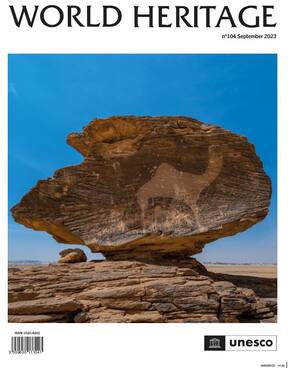
Subscribe to World Heritage Printed version
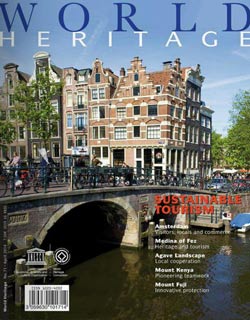
World Heritage Paper Series
Launched in 2002 in an effort to publish a series on various World Heritage subjects.
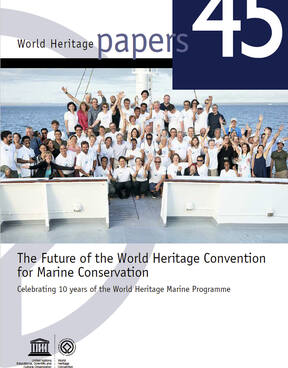
This large format full-colour map features World Heritage sites and brief explanations of the World Heritage Convention and the World Heritage conservation programmes. It is available in English, French and Spanish, as well as superb photos of World Heritage sites with explanatory captions. The dimensions of the map are 78 cm by 50 cm (31 in. by 20 in.).
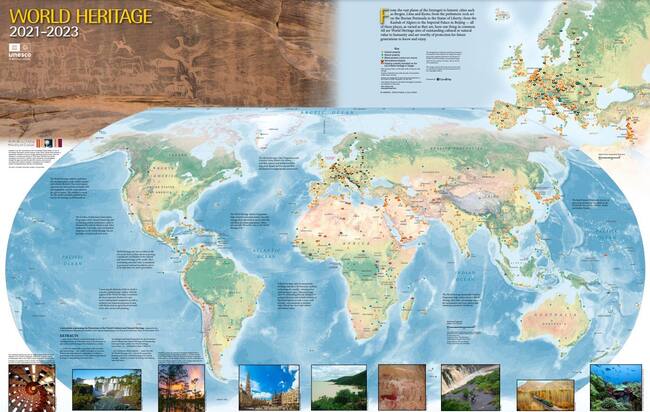
Order the map Download the map
The World Heritage Newsletter
Published until November 2005. Available in English and French from n°1 to 51.
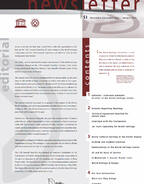
Resource Manuals

Other materials

Brochures & Info kits

Talk to our experts
1800-120-456-456
- Speech on World Heritage Day

Speech on World Heritage Day for Students in English
As humans, we like to remember our ancestors and the people gone by through their work and legacy. World Heritage Day celebrates these exact sentiments by appreciating and cherishing the ancient monuments, arts, and sites. This day is also called International Day For Monuments And Sites. In this article, we will look into different ways World Heritage Day Speech can be presented in. It can be a Long Speech On World Heritage Day or a Short World Heritage Day Speech.
Long and Short Speech on World Heritage Day
Long speech on world heritage day.
This form is useful for students in grades 8-12 to speak in detail about World Heritage Day using simple language making it easier for them to understand.
Good morning everyone. I Xyz (mention your name) am here today to talk about World Heritage Day that is celebrated on 18th April every year. At a time like this when everyone is dealing with different kinds of losses and grieving because a pandemic has put a pause to our fast-paced lives, it is our shared culture, Heritage, and Shared Responsibility that brings us closer together as people.
World Heritage Day has been celebrated keeping in mind the decided theme that the International Council on Monuments and Sites chooses every year. Due to its influence by the council on this celebration, it is also referred to as International Day For Monuments And Sites.
The tradition of celebrating this day to celebrate the legacy of our ancestors started many years ago in 1983 when UNESCO General Conference approved and passed a resolution at its 22nd session in November. This was further examined by the Member States, and April 18th has been chosen since to celebrate the cultural heritage.
In schools, the students are taught about the importance of this day and taken on visits to various monumental sites, which in India we have many. Some examples include Taj Mahal which is a visual sight for about 7-8 million people per year from all around the world. Rajasthan, in particular, has very well managed to preserve the forts and monuments that have been of significance since the kings were in the ruling. The celebrations held in Delhi are beautiful. Recently, candles or diyas were lit around the Red Fort, Humayun Tomb and Qutub Minar to honour the corona warriors who have bravely put their lives on the line to protect others.
There are banners put in towns and cities to mark this day. In schools discussions, elocution and debates are held so the students can be more informed about this day. The TV news channels and radio shows also educate the citizens about this beautiful country and the tradition of World Heritage Day. Students also visit different exhibitions of paintings, museums, and libraries to learn about the artworks of the era gone by. This becomes a national moment of pride as we remember our history and heritage.
India truly has a rich history and thus it gives us more the reason to conserve and preserve that. This day is also a reminder to preserve our cultural heritage and create awareness about the same in the young minds who are the next generation.
Short Speech on World Heritage Day
This form of Short Speech On World Heritage Day is useful for students in grades 4-7 as they can speak about this and convey the meaning using simple words in a short form.
Good Morning everyone, welcome to the celebration of this special day that is World Heritage Day. This traditional celebration was first presented by the International Day For Monuments And Sites. After careful examination by the Ministers State, UNESCO General Conference approved for making this an annual event in November in its 22nd session. There is great pride in celebrating our ancestral legacy and sharing this feeling with others in these trying times which gives us hope and a sense of belonging.
The objective of this day is that the organizations try to conserve and preserve our cultural heritage. And these programs are held on an international level. This day is observed on April 18th annually. The celebrations are held in schools, by conducting events such as debates, speeches, elocution, and quiz.
The students are also taken on field trips and they visit monumental sites that are in the geographical realm. The newspapers, news hosts, and radio stations also try and spread more information about the day. And give us many reasons to be proud of the country we live in. Our ancestors and forefathers have built a legacy even when our nation was at the cusp of so much turmoil that we were fighting. There are many beautiful pieces of art, forts, pillars, buildings, ancient monuments, temples, paintings, books published, and classical artworks.
This day is an attempt to help continue with educating our children and youth about the importance of our historical works and taking pride in the shared cultural heritage. Hope we continue to learn more and like other holidays celebrate this day with a lot of zeal. Curiosity and questions about our nation’s history will be answered on this day. So let’s learn and explore.
10 Line Speech on World Heritage Day
This is helpful to convey the meaning for students in grades 1-3 with the simple word in 10 lines.
This day is celebrated on the 18th of April every year.
The decision was made by UNESCO General Conference on their 22nd session.
The idea of celebrating the heritage and culture was a proposal by the International Council on Monuments and Sites.
The council also chooses a theme every year, and that is followed by all the countries, around the world.
This is a very innovative way to celebrate and record all the data for monuments and sites around the world.
We have been robbed of so much of our riches and yet what we have built after has been truly extraordinary.
And this day is a reminder to celebrate the amazing forts, Taj Mahal, Humayun Tomb, Qutub Minar, Red Fort, and the intricately designed Pink wall of Jaipur fort.
And many ancient temples whose architectural genius of construction is yet undeciphered.
On this day students are taken to visit such places and gain more information.
The celebration of such details solidifies our identity and makes us proud of our ancestral legacy.
ICOMOS proposed to the United Nations Educational, Scientific, and Cultural Organisation (Unesco) in 1982 that April 18 be designated as the International Day of Reminders and Places. This idea was endorsed by Unesco at its 22nd conference in 1983.
Value of Heritage
Our heritage includes our museums, buildings, monuments, museum artefacts, artefacts, and museums known as tangible treasures.
Our waterways, habitats, forest areas, bogs, highlands, native wildlife, insects, plants, trees, birds, and animals are all examples of the environment.
Our culture, sports, music, dance, myth, crafts, skills, and culture are all intangible.
Our tangible, intangible, and natural heritage, as well as the myths, legends, traditions, and associated memories, give us the same language and understanding that allows us to communicate deeply and uniquely express ourselves in the outside world.
Our ancestors left a trail in our history and how our culture developed. It helps to explore our history and culture, as well as to develop self-awareness. It makes us understand and explain why we are what we are. Encouraging local communities to commit and participate in the development and preservation of their history is an important aspect of the activities of the Heritage Council. Preserving and developing our heritage is important because it serves as the foundation for local economic development and innovation in tourism, agriculture, recreation, education and business in general.
Our quality agricultural products are built on the foundation of our natural heritage. For nutritious food and food security, as well as fresh air and clean water, we rely on healthy ecosystems.
Gems are endangered because they provide a great deal of valuable personal experience and enjoyment. It improves our health and allows us to express ourselves, but it needs further protection and improvement.
It is important for the government to recognize the value of our history and to reflect these appropriate and transformed programs and significant funding.
As a result, the best aspects of our heritage will be passed on to our children and their children.
"The most important thing is to celebrate this day so that it is not only a day to honor National Heritage but also a day of International Unity to consolidate and preserve World Heritage," according to ICOMOS.
The purpose of the day is to encourage local communities and individuals to recognize the importance of cultural heritage in their lives. It also focuses on awareness of cultural diversity and the vulnerability of cultural heritage to conservation activities.
The goal of World Heritage Day is to bring together people from all over the world to share information about their history, heritage, and culture. It allows people from other communities to learn more about each other and, as a result, promotes coexistence.
The Taj Mahal, Hampi, Ajanta, and Ellora Caves, Sun Temple, Sanchi, Rani Ki Vav, Rajasthan Hill Forts, etc. are among the world’s most treasured places. The Western Ghats, the Great Himalayan National Park, the Kaziranga WildLife Sanctuary, the Sundarbans National Park, the Inanda Devi, and the Valley of Flowers National Parks, are among the most important natural sites.
Uttar Pradesh has the most protected areas (745), followed by Karnataka (506) in number. Today, the empty corridors of some of the world's most famous landmarks paint a grim picture of human misery.
Why Our Heritage Needs Protection
Local economies have long benefited from a landmark, especially tourism.
The attractive environment helps to attract foreign investors and support current businesses of all kinds, not just tourism-related businesses.
People are proud of their heritage, but they rarely talk about how much they love the place until it is threatened. Values are important in creating a ‘sense of place’ in society as it gives them character and diversity.
For people of all ages, heritage sites are an important source of local education. Learning about local history can help unite communities by enhancing shared knowledge of the unique cultural identity provided by heritage sites.
Many heritage sites serve as meeting places for local people and activities. The significance of their preservation extends beyond their historical significance, emphasizing their distinctive personality and sense of belonging in our emotions. In addition, these historical features of buildings contribute to the beauty of the modern urban landscape.

Home — Essay Samples — Arts & Culture — Heritage — Discussion on World Heritage and Tourism
Discussion on World Heritage and Tourism
- Categories: Heritage Tourism
About this sample

Words: 818 |
Published: Dec 12, 2018
Words: 818 | Pages: 2 | 5 min read

Cite this Essay
Let us write you an essay from scratch
- 450+ experts on 30 subjects ready to help
- Custom essay delivered in as few as 3 hours
Get high-quality help

Prof Ernest (PhD)
Verified writer
- Expert in: Arts & Culture Geography & Travel

+ 120 experts online
By clicking “Check Writers’ Offers”, you agree to our terms of service and privacy policy . We’ll occasionally send you promo and account related email
No need to pay just yet!
Related Essays
2 pages / 793 words
5 pages / 2265 words
1 pages / 403 words
1 pages / 538 words
Remember! This is just a sample.
You can get your custom paper by one of our expert writers.
121 writers online
Still can’t find what you need?
Browse our vast selection of original essay samples, each expertly formatted and styled
What makes something a prized possession? Is it the monetary value, the sentimental attachment, or the memories associated with it? For me, my most prized possession is not something that can be bought or sold, but rather, it [...]
In Alice Walker's short story "Everyday Use," the author explores the complex themes of heritage, identity, and the clash between traditional and modern values. Through the experiences of a rural African-American family, Walker [...]
Cultural awareness is crucial for fostering mutual understanding, respect, and cooperation among individuals from different cultural backgrounds. In a multicultural society, cultural awareness promotes inclusivity and reduces [...]
Everyday Use is a short story written by Alice Walker that explores the theme of heritage and identity through the lens of an African-American family. The story revolves around the conflicting ideas of heritage and how they are [...]
Historical buildings and cultural assets can be greatly affected during war. Cultural heritage refers to the tangible and intangible elements of a society, such as monuments, artifacts, and traditional practices, that are passed [...]
Nowadays there are huge arguments between city development and conserving the past: some say old buildings should be replaced with modern buildings and shopping malls, because more money can be made from these developments. Some [...]
Related Topics
By clicking “Send”, you agree to our Terms of service and Privacy statement . We will occasionally send you account related emails.
Where do you want us to send this sample?
By clicking “Continue”, you agree to our terms of service and privacy policy.
Be careful. This essay is not unique
This essay was donated by a student and is likely to have been used and submitted before
Download this Sample
Free samples may contain mistakes and not unique parts
Sorry, we could not paraphrase this essay. Our professional writers can rewrite it and get you a unique paper.
Please check your inbox.
We can write you a custom essay that will follow your exact instructions and meet the deadlines. Let's fix your grades together!
Get Your Personalized Essay in 3 Hours or Less!
We use cookies to personalyze your web-site experience. By continuing we’ll assume you board with our cookie policy .
- Instructions Followed To The Letter
- Deadlines Met At Every Stage
- Unique And Plagiarism Free

IMAGES
VIDEO
COMMENTS
Essay on World Heritage Day for Students and Children in 1000 Words. Our Earth is a strange planet with so many variable things. In various countries of the world, sites of historical-cultural importance should be preserved for future generations. These are kept in the list of heritage. Such natural, historical, religious sites are included in ...
World Heritage site, any of various areas or objects inscribed on the United Nations Educational, Scientific and Cultural Organization World Heritage List. The sites are designated as having "outstanding universal value" under the Convention Concerning the Protection of the World Cultural and Natural Heritage. This document was adopted by UNESCO in 1972 and formally took effect in 1975 ...
A total of 30 Cultural World Heritage sites have been identified in India as of 2020. Some of the most well-known heritage sites include Hill Forts of Rajasthan, Red Fort Complex, Humayun's Tomb, Mountain Railways of India, Elephanta Caves, Fatehpur Sikri, Sun Temple, Ellora Caves and the Taj Mahal. The third classification of heritage is ...
Culture is a resource for the identity and cohesion of communities. In today's interconnected world, it is also one of our most powerful resources to transform societies and renew ideas. It is UNESCO's role to provide the tools and skills we need to make the most of its ultimate renewable energy. Historical landmarks, living heritage and ...
From the hundreds of essays written, these nine were chosen as winners. Be sure to read the author's response to the essay winners, literary gems and clever titles that caught our eye, and even more essays on identity in our Gallery of Voices. Middle School Winner: Susanna Audi. High School Winner: Keon Tindle. High School Winner: Cherry Guo.
250 Words Essay on World Heritage Day Introduction. World Heritage Day, celebrated on 18th April every year, is a global observance that underscores the collective responsibility of the international community to preserve and respect cultural and natural heritage. This day is an opportunity to raise public awareness about the diversity of ...
8 years ago. Cultural Heritage is the sum total of various influences on an individual, as of a particular point in time, that influences that person to voice their thoughts, opinions and ideas to others. Culture over time can and will change as new ideas are explored and adopted. Comment. ( 3 votes) Upvote.
World Heritage partnerships for conservation. Ensuring that World Heritage sites sustain their outstanding universal value is an increasingly challenging mission in today's complex world, where sites are vulnerable to the effects of uncontrolled urban development, unsustainable tourism practices, neglect, natural calamities, pollution, political instability, and conflict.
500 Words Essay on Heritage ... we can gain a deeper understanding of our ancestors' lives and the historical events that shaped our world. Secondly, heritage preservation contributes to identity formation. It allows us to understand our roots and gives us a sense of belonging. It also fosters respect for cultural diversity and human ...
At its 35th Session (Paris, 2011), the World Heritage Committee made a number of additions to the Operational Guidelines which refer to sustainable development, notably in paragraphs 112, 119, 132, as well as in Annex 5, points 4.b and 5.e. These amendments are aimed on one hand at ensuring that any use of World Heritage properties be ...
World Heritage Papers 6. UNESCO World Heritage Centre 2003. (E) Cultural Landscapes: the Challenges of Conservation. World Heritage papers 7. UNESCO World Heritage Centre 2003. World Heritage 2002. Shared Legacy, Common Responsibility. Associated Workshops, 11-12 November 2002, Ferrara, Italy. (E) Conseil de l'Europe : Mémoire du patrimoine.
Relatable characters and themes weave the stories in Shakespeare's plays. Sappho of Creative Heritage: Fragment 31. The Fragment 31 by Sappho is a masterpiece that celebrates being in love and demonstrates the pain of inner feelings because of unrequited love. YeKooche First Nation Aboriginal: The Cultural Heritage.
Cultural heritage is the legacy of physical artifacts and intangible attributes of a group or society that are inherited from past generations, maintained in the present and bestowed for the benefit of future generations. Cultural heritage includes tangible culture (such as buildings, monuments, landscapes, books, works of art, and artifacts).
According to the latest heritage at risk report made by ICOMOS in 2020, ≈65% of the world's buildings with artistic and/or cultural interest currently present lack of maintenance and are in a poor state of conservation, which leads structures to a constant loss of its cultural, artistic, and economic value. Such loss has drawn recently the ...
Short Essay on Indian Heritage. It might not be easy to write a 100 words essay on Indian heritage, which is why we have provided a sample essay for the same below. Give it a read. Indian history is as rich as its culture. If we look at the architectural marvels of the heritage sites such as Hampi, Khajuraho, Taj Mahal, Lal Kila, Qutub Minar ...
5. Nanda Devi and Valley of Flowers National Park, in 2004. 6. The Western Ghats, in 2012. 7. The Great Himalayan National Park was declared a UNESCO World Heritage Site in the year 2014. Conclusion. India is an ancient country. We are blessed with a beautiful heritage.
She has worked with the World Heritage Convention since 1987, chairing the Committee in 1990 and 2008 and co-authoring Many Voices, One Vision: The Early Years of the World Heritage Convention (2013). ... and the coordinator of the UNITWIN network 'Tourism, Culture, Development'. She is the author of several books and papers related to ...
World heritage is important as it is used for educational purposes, as well as being conserved by different organisations and laws. There are however lots of underlying problems by classing finds as 'world heritage'. World heritage is seen as very important for education. Many would argue that it is important to use finds and artefacts to ...
World Heritage Sites Essay. 1123 Words5 Pages. Must See UNESCO Heritage Sites in India. The cultural legacy of a nation is an awesome notice of its magnificent past. It is that valuable legacy which ought to be saved to be gone on from eras to eras. There may be various structural wonders in a nation yet just a couple of them hold all inclusive ...
World Heritage partnerships for conservation. Ensuring that World Heritage sites sustain their outstanding universal value is an increasingly challenging mission in today's complex world, where sites are vulnerable to the effects of uncontrolled urban development, unsustainable tourism practices, neglect, natural calamities, pollution, political instability, and conflict.
Long Speech on World Heritage Day. This form is useful for students in grades 8-12 to speak in detail about World Heritage Day using simple language making it easier for them to understand. Good morning everyone. I Xyz (mention your name) am here today to talk about World Heritage Day that is celebrated on 18th April every year.
There is certainly complex and longstanding relationship between World Heritage and tourism. As tourism being mentioned only once amongst the 38 articles of the 1972 "Convention Concerning the Protection of the World cultural and natural Heritage" (UNESCO 1972) it has been very true in the day-to-day practice of site management as well as long underpinned how World Heritage Sites are ...
Paragraph on World Heritage Day: World Heritage Day is celebrated by the whole world on April 18 to preserve the human legacy and appreciate the organizations' efforts. Monuments and ancient creations are an asset to humanity. They make for the important heritage of the country. You can read more Paragraph Writing about articles, events, people, sports, technology many […]